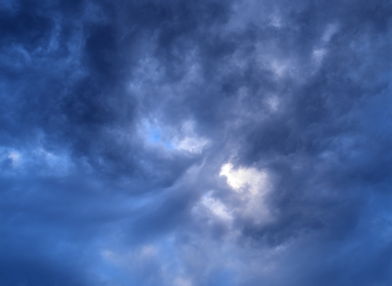Tanzania, 2016
In 2016 we took a trip to Tanzania with some old friends. The bulk of the trip was spent on safari in northern Tanzania, where we visited three natural areas: Tarangire National Park, Ngorongoro Conservation Area, and Serengeti National Park. Photos below are grouped into those three areas, chronologically. After that, we had a day hike on the slopes of Mt. Kilimanjaro.
Photos here have been adjusted for brightness/contrast/levels, and a few have been manipulated a bit more, but with a light touch overall, I hope. "Original" photos linked here include those manipulations, and are at 1/2 of the original resolution.
|
|
 |
| Tarangire National Park |
 |
|
We started in Arusha, where we arrived by plane. Our driver and guide Mohamed met us, and we drove to Tarangire through a rural landscape with occasional people. Note that Keewi has a blog post about Tarangire at Keewi's Adventures.
|
|
 |
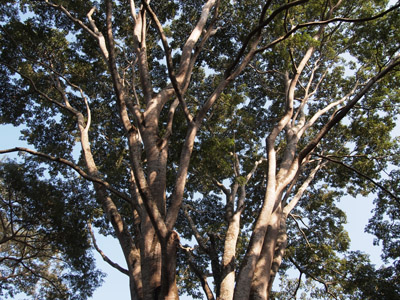
|
 |
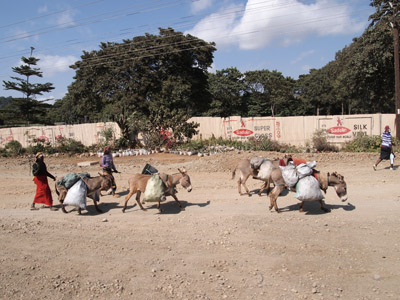
|
 |
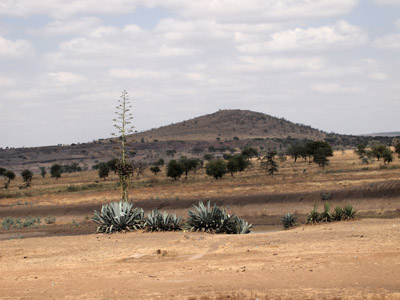
|
 |
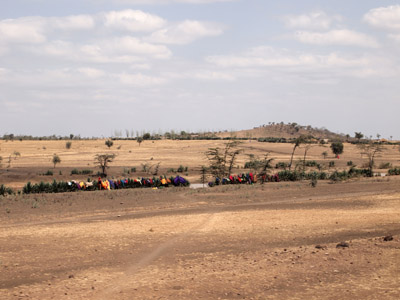
|
 |
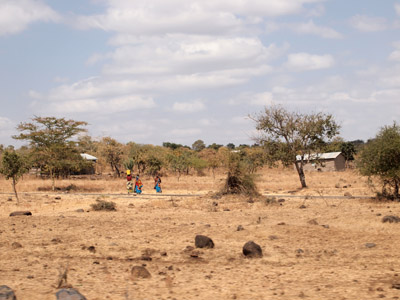
|
 |
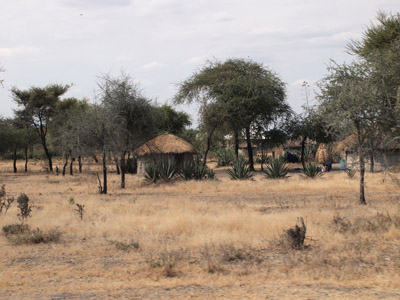
|
 |
|
Now we've arrived in Tarangire. It's hard to convey the excitement of seeing all of these animals in the wild for the first time — zebras, giraffes, antelope, wildebeest! Mohamed thought it was very funny that we wanted to stop and take so many photos of zebras; he assured us that we would see plenty more zebras, and he was not wrong. Soon they became such a familiar sight that we nicknamed them "zeb-zeb".
|
|
 |
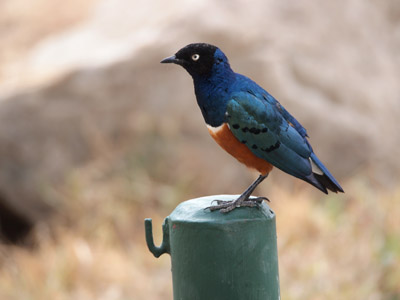
|
 |
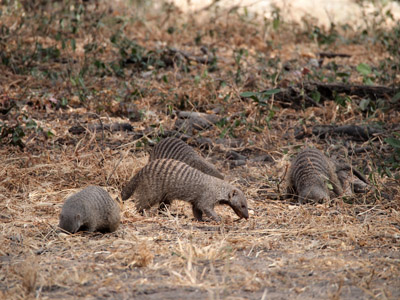
|
 |
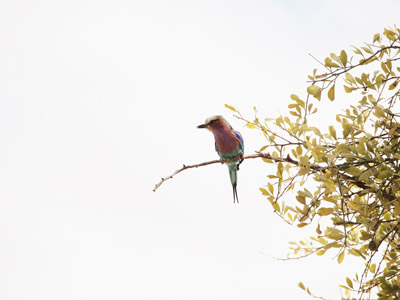
|
 |
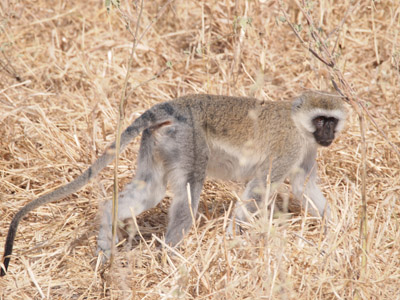
|
 |
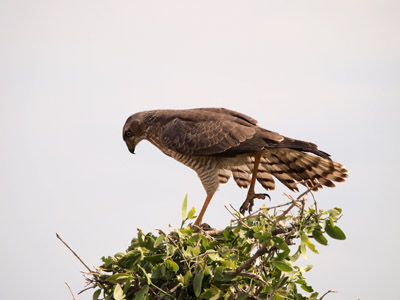
|
 |
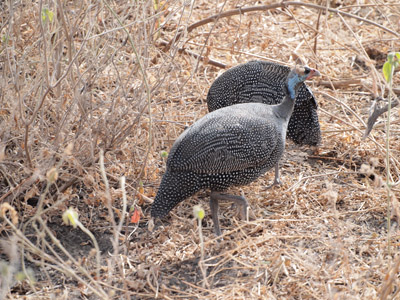
|
 |
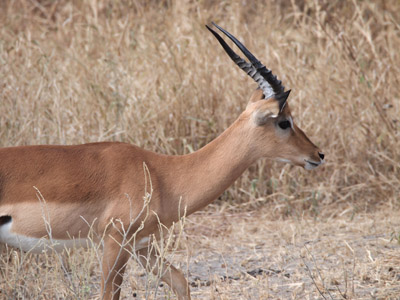
|
 |
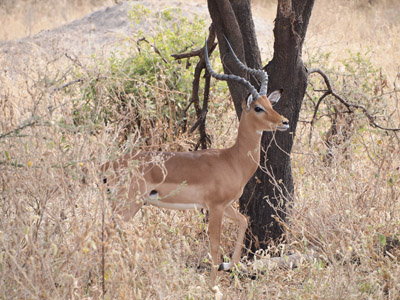
|
 |
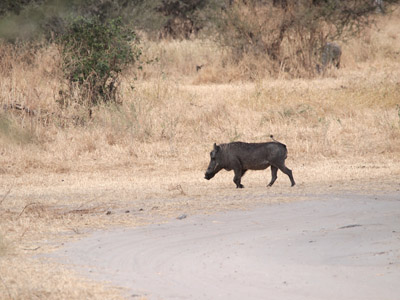
|
 |
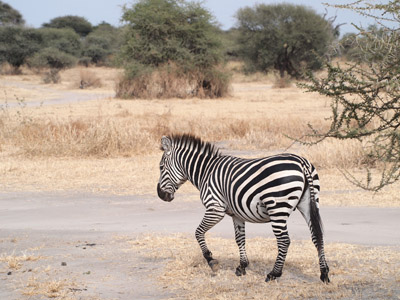
|
 |
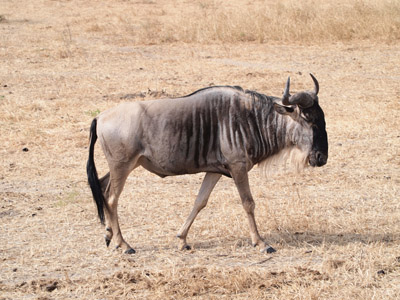
|
 |
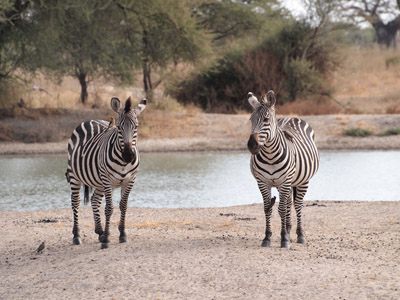
|
 |
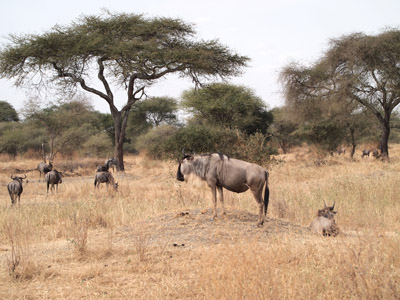
|
 |
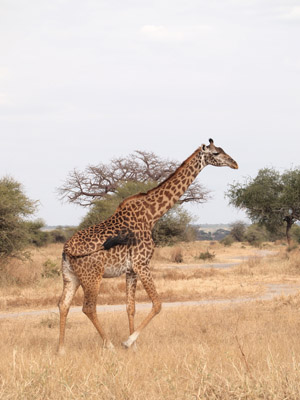
|
 |
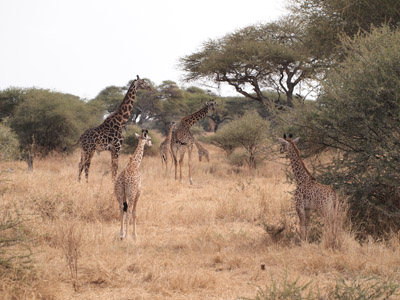
|
 |
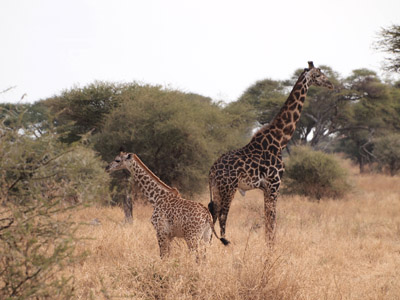
|
 |
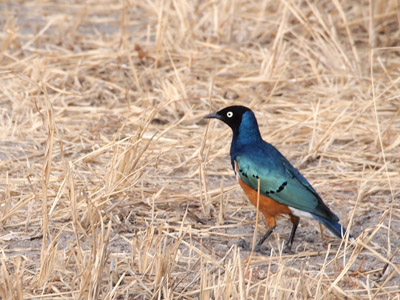
|
 |
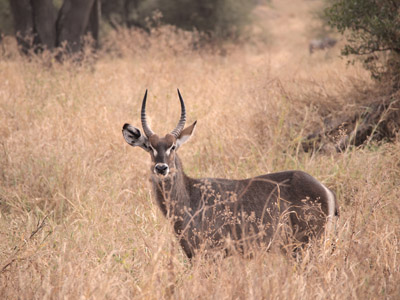
|
 |
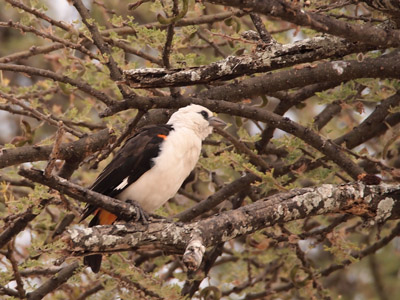
|
 |
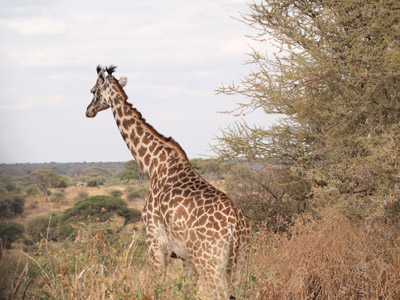
|
 |
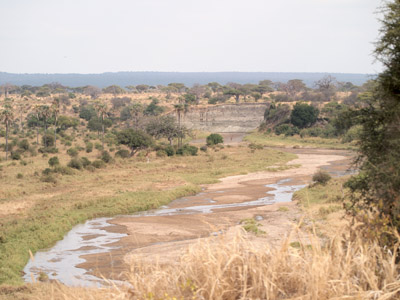
|
 |
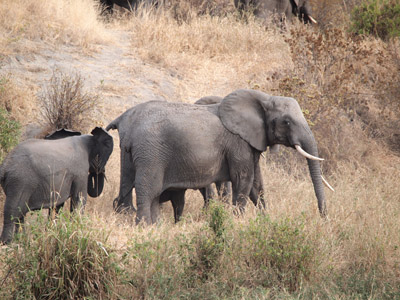
|
 |
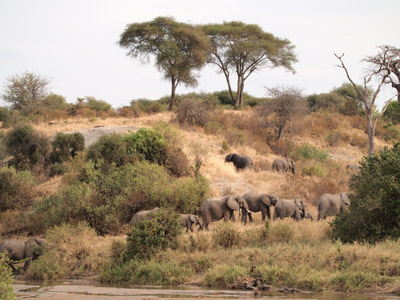
|
 |
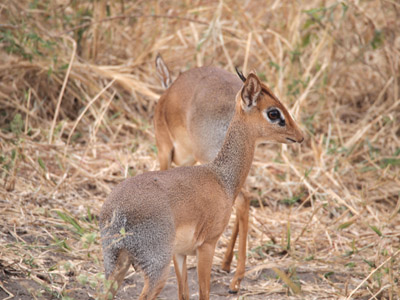
|
 |
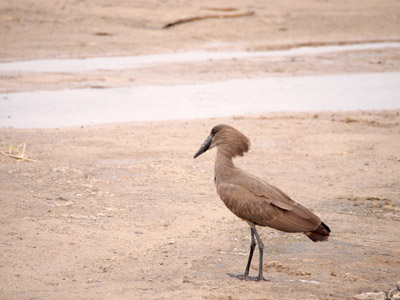
|
 |
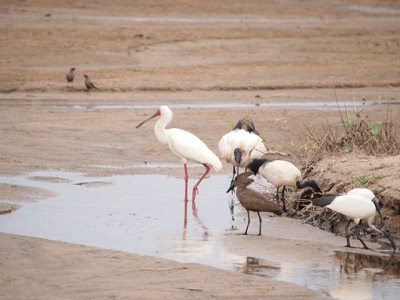
|
 |
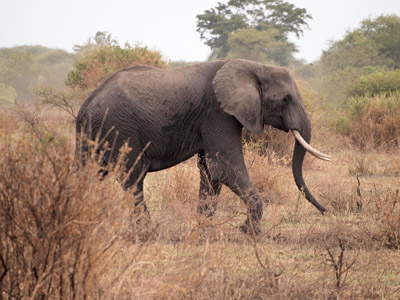
|
 |
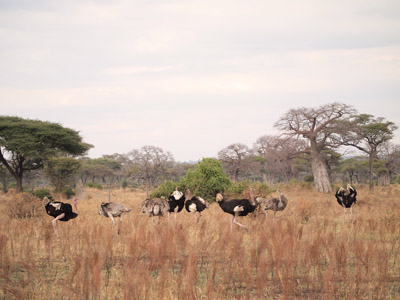
|
 |
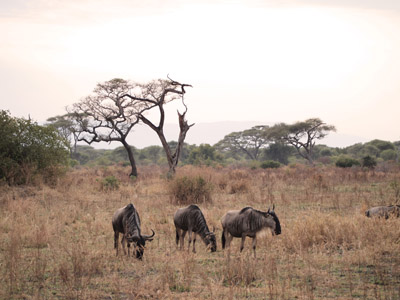
|
 |
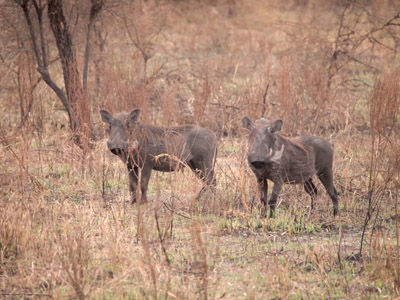
|
 |
|
Day two at Tarangire. In the first two photos you can see the camp where we stayed (and the camps at the other locations were similar). We were not really roughing it; we had toilets (miniature pit toilets), showers (from a bag of hot water suspended overhead), and meals cooked by a chef.
|
|
 |
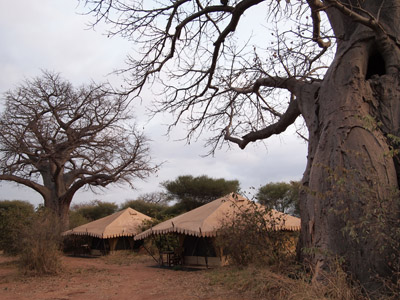
|
 |
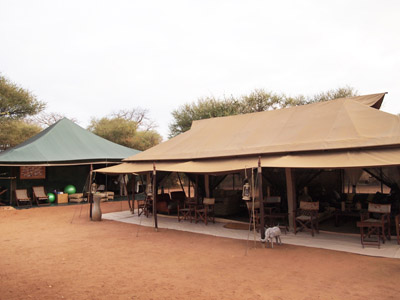
|
 |
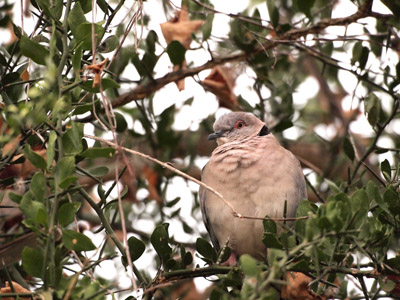
|
 |
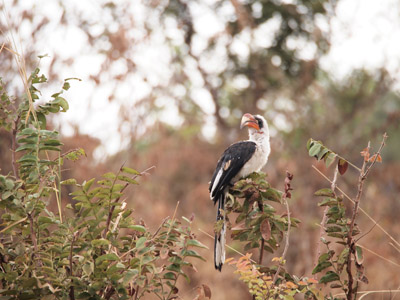
|
 |
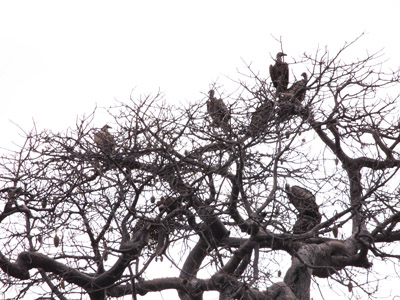
|
 |
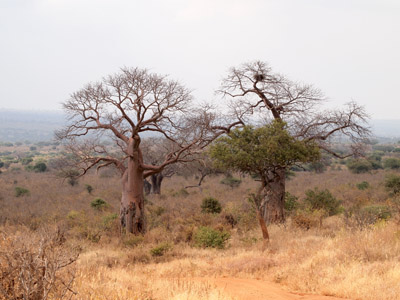
|
 |
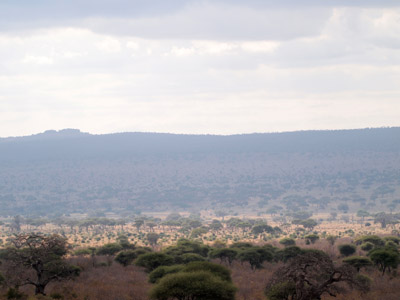
|
 |
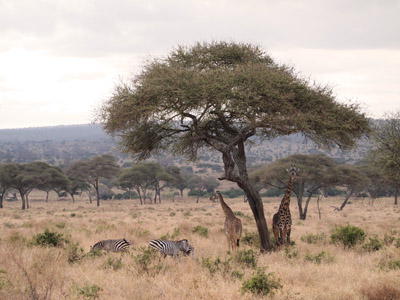
|
 |
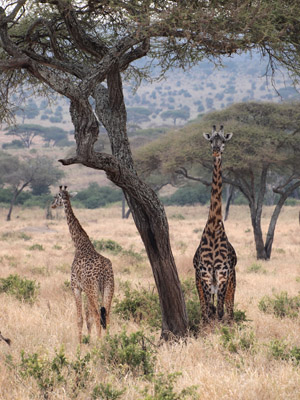
|
 |
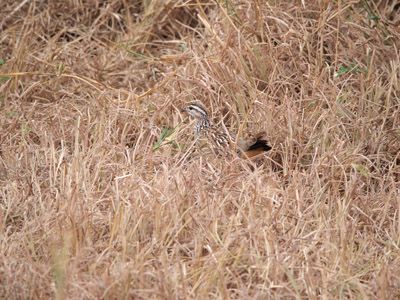
|
 |
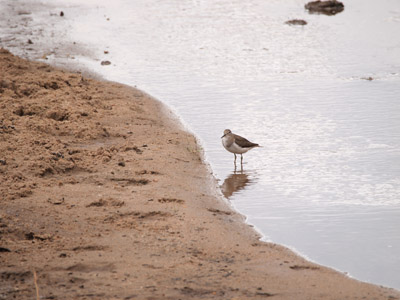
|
 |
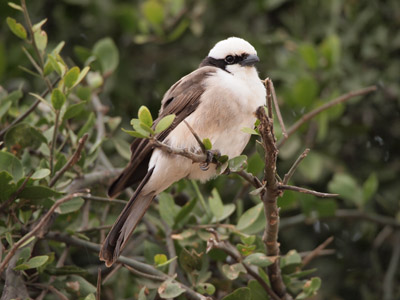
|
 |
|
Tarangire is known for its elephants, and did not disappoint.
|
|
 |
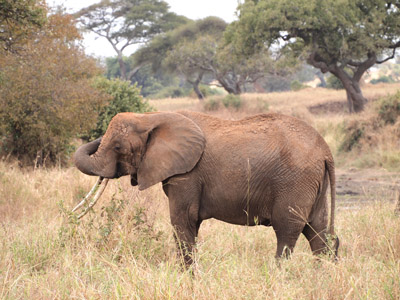
|
 |
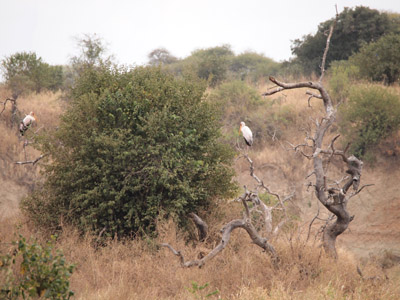
|
 |
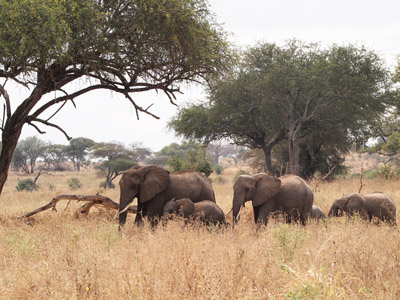
|
 |
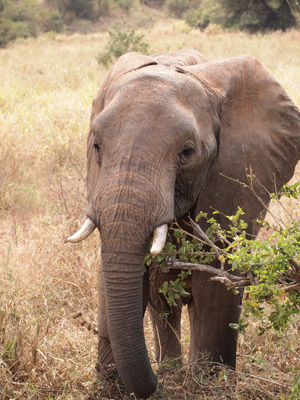
|
 |
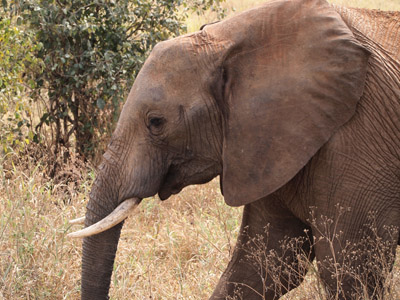
|
 |
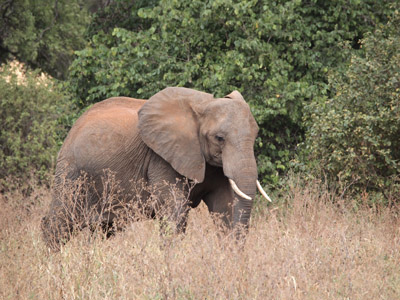
|
 |
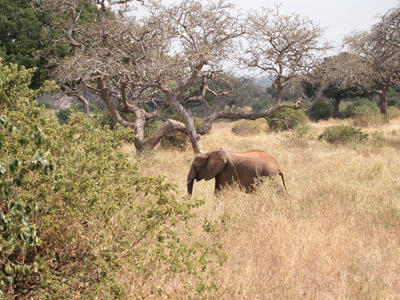
|
 |
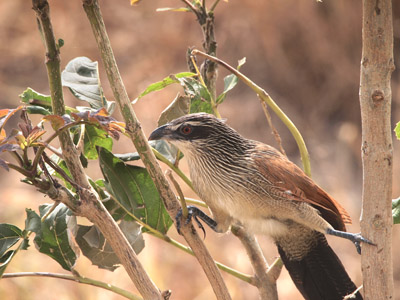
|
 |
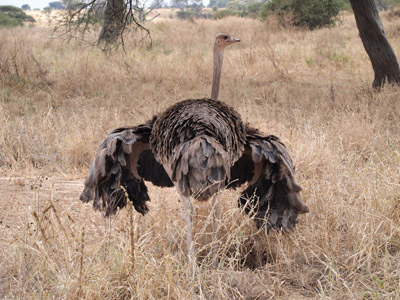
|
 |
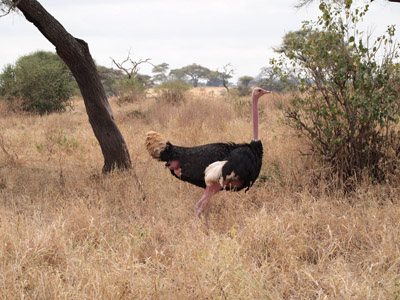
|
 |
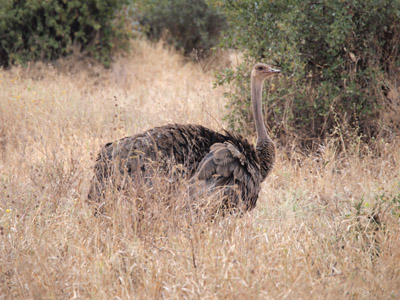
|
 |
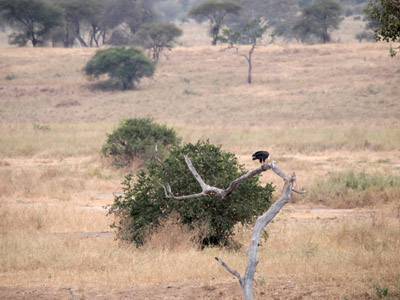
|
 |
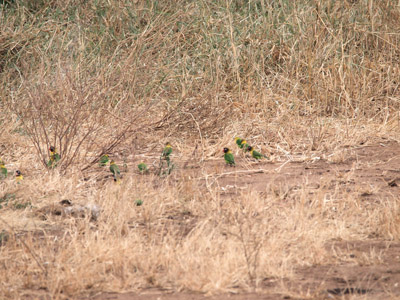
|
 |
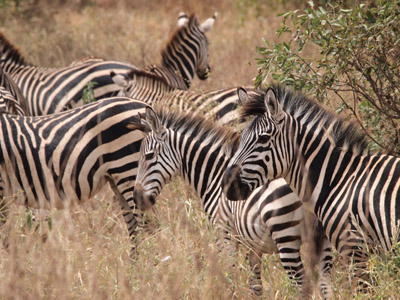
|
 |
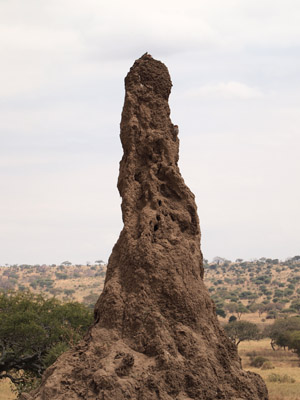
|
 |
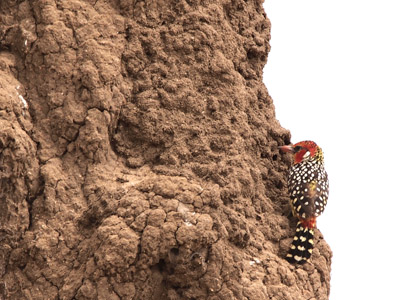
|
 |
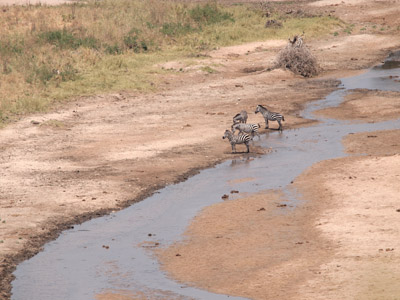
|
 |
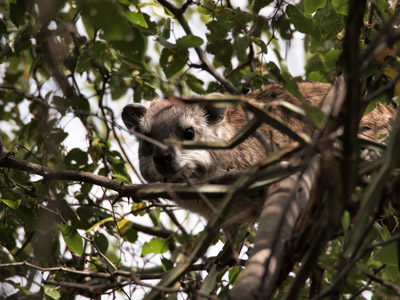
|
 |
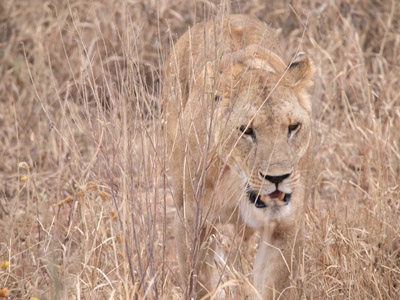
|
 |
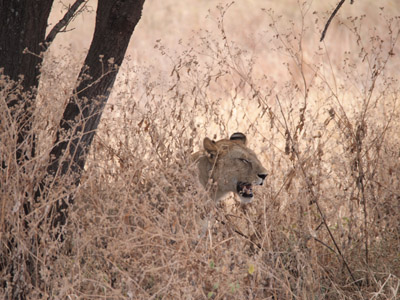
|
 |
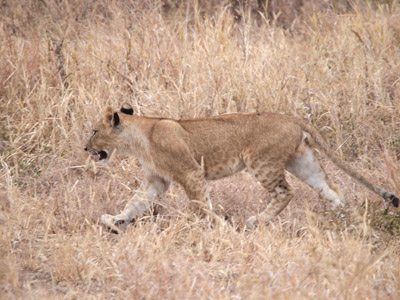
|
 |
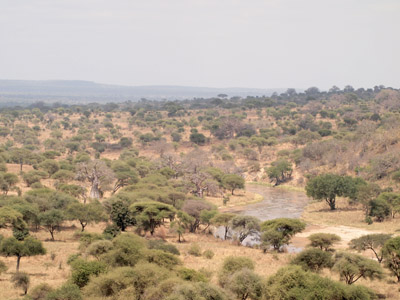
|
 |
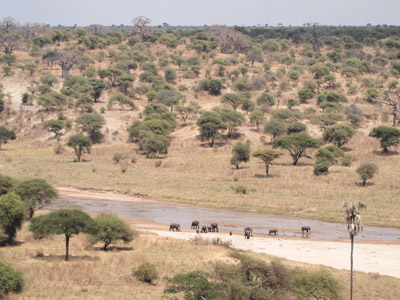
|
 |
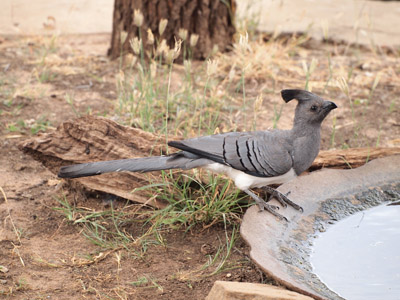
|
 |
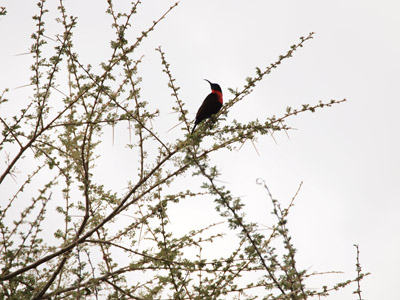
|
 |
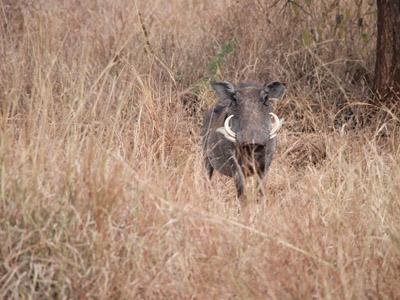
|
 |
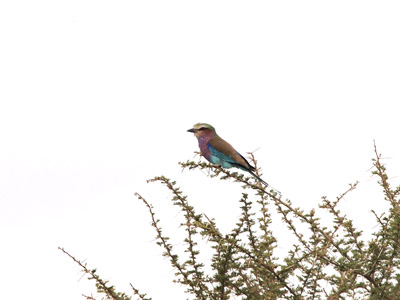
|
 |
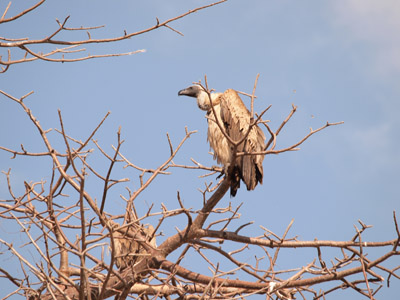
|
 |
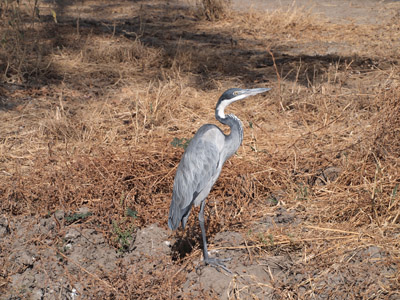
|
 |
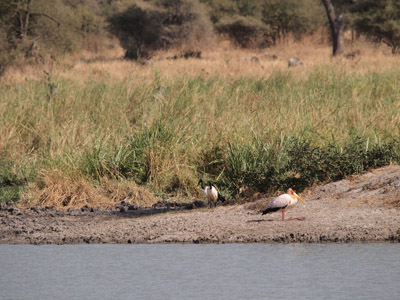
|
 |
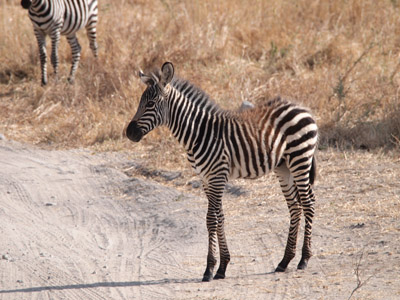
|
 |
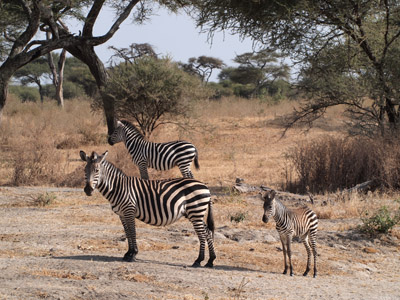
|
 |
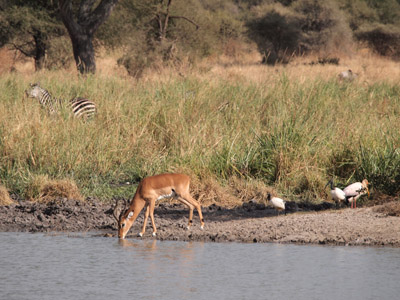
|
 |
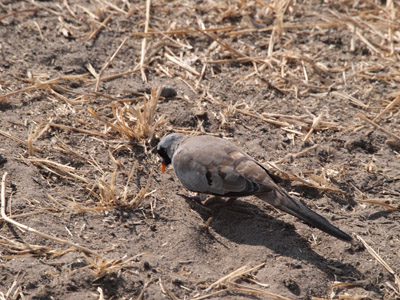
|
 |
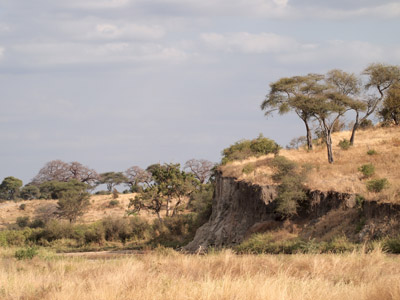
|
 |
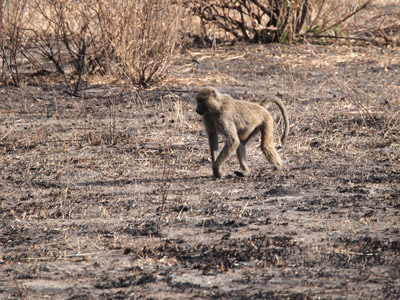
|
 |
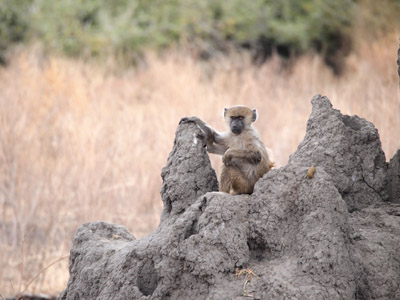
|
 |
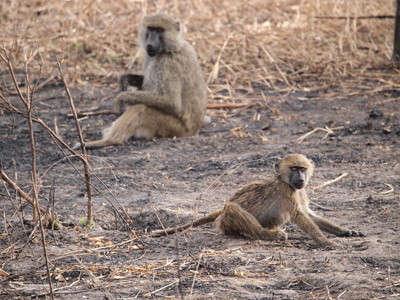
|
 |
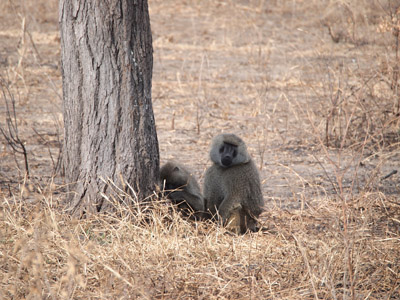
|
 |
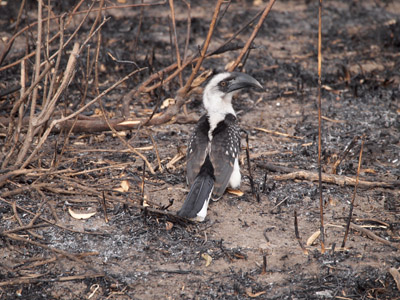
|
 |
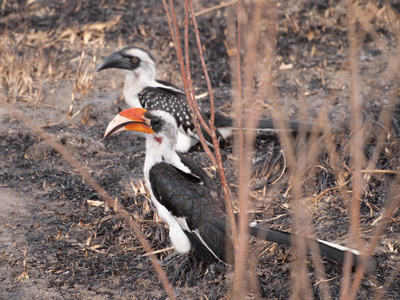
|
 |
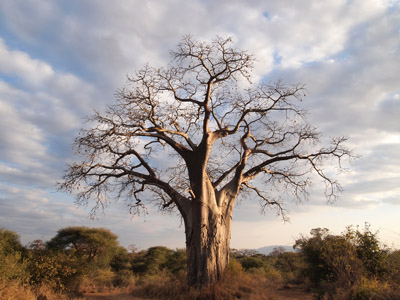
|
 |
|
Day three at Tarangire. The first photo is of sunrise behind the lovely baobab tree at the edge of camp (also in the last photo of day two). The second photo is our ever-patient driver and guide, Mohamed.
|
|
 |
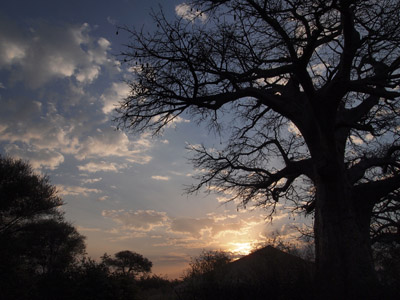
|
 |
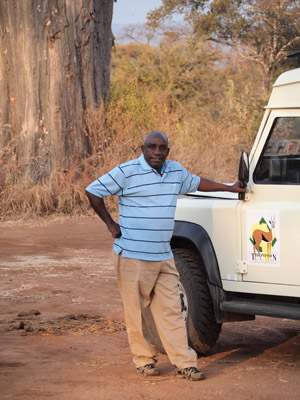
|
 |
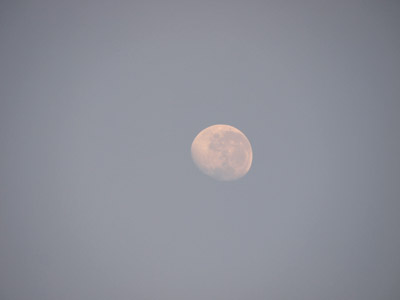
|
 |
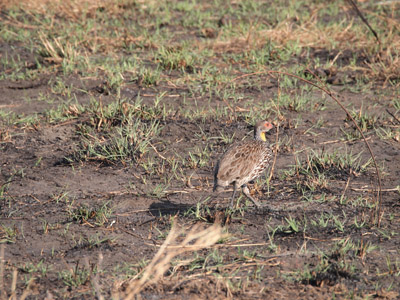
|
 |
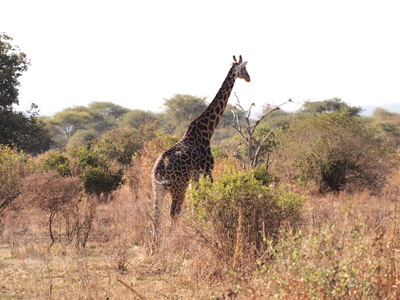
|
 |
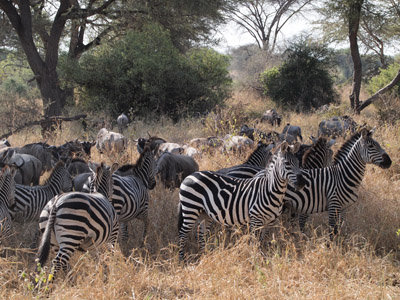
|
 |
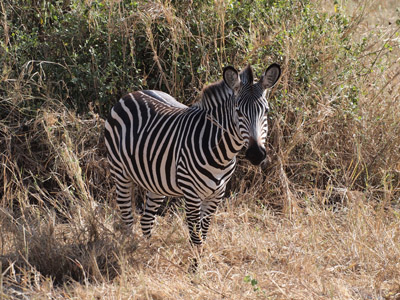
|
 |
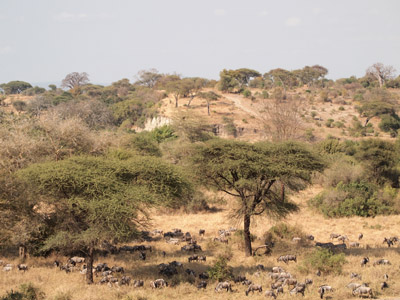
|
 |
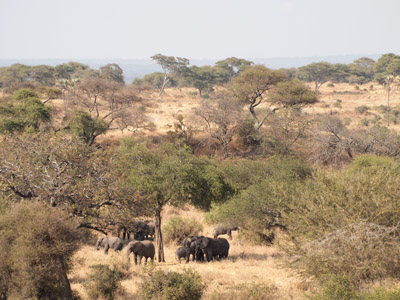
|
 |
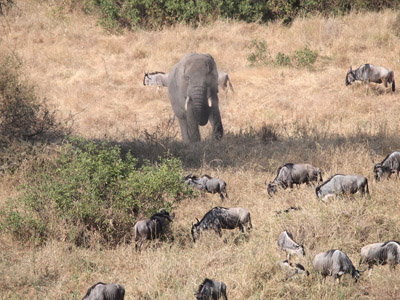
|
 |
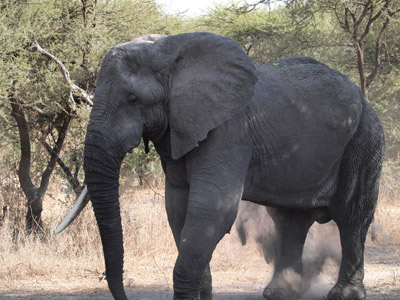
|
 |
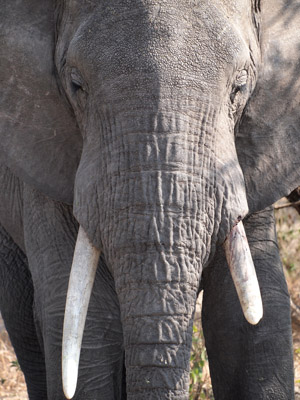
|
 |
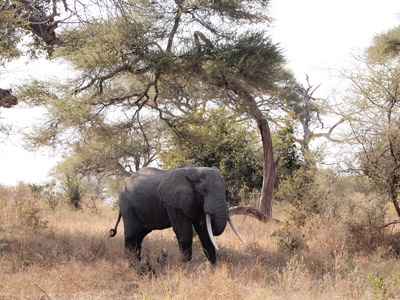
|
 |
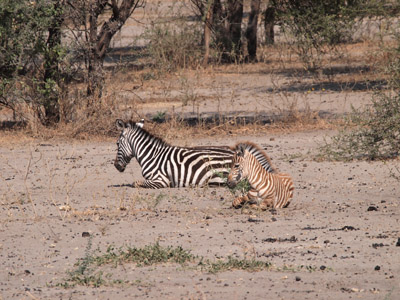
|
 |
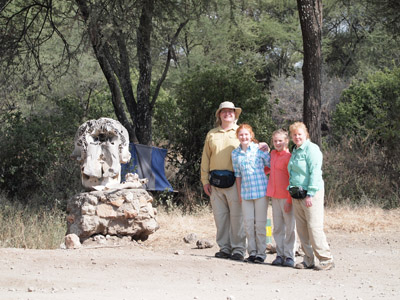
|
 |
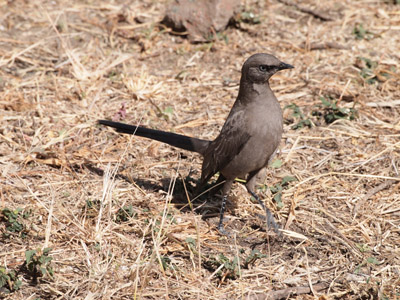
|
 |
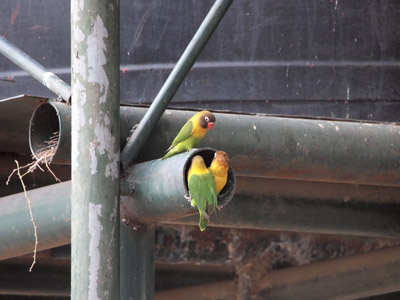
|
 |
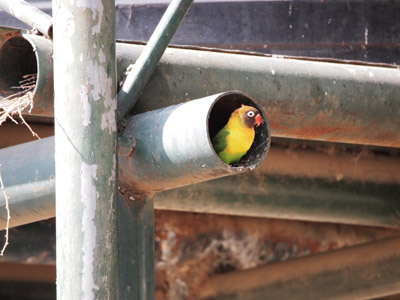
|
 |
|
At about this point in the day we headed toward a school where we had a planned visit. You see some views of towns along the way, taken from the moving car, and some storks (amazing iridescent wings!), and then we're at the school.
|
|
 |
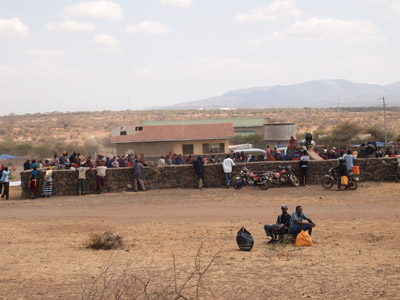
|
 |
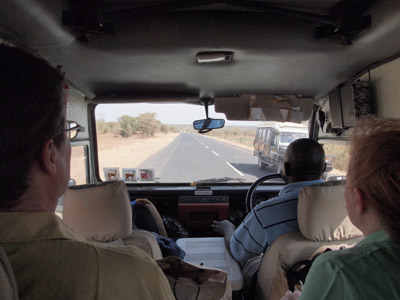
|
 |
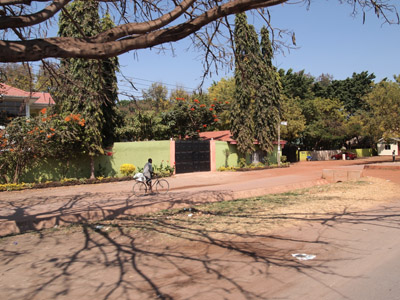
|
 |
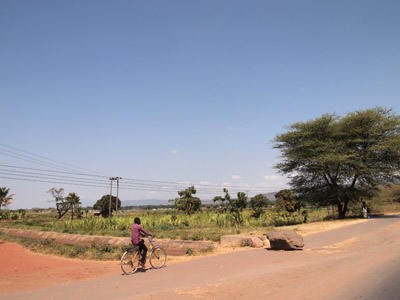
|
 |
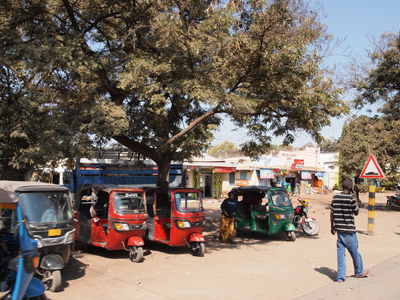
|
 |
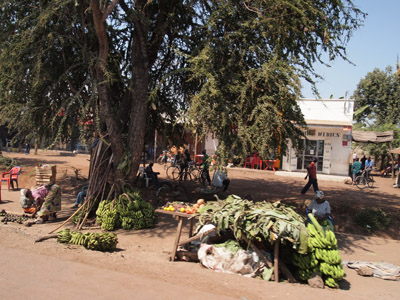
|
 |
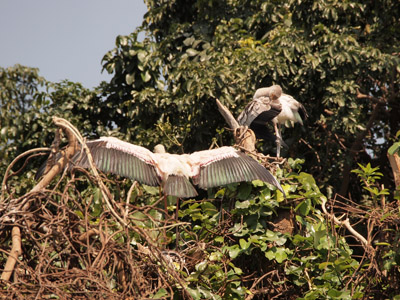
|
 |
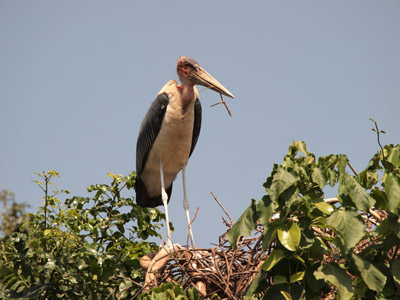
|
 |
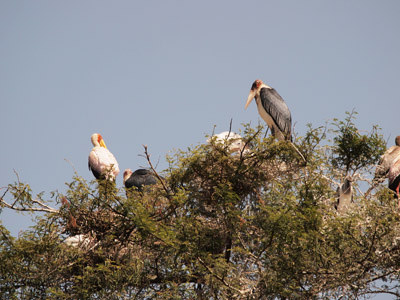
|
 |
|
We introduced the faculty of the school to a sort of card game we had brought for them as a present, the students performed a song and dance for us, our friends' children showed them photos of their lives, we took group photos, and that was that. Honestly I hope that such visits don't distract too much from the education of the children; I hope they aren't interrupted by tourists like us every day!
|
|
 |
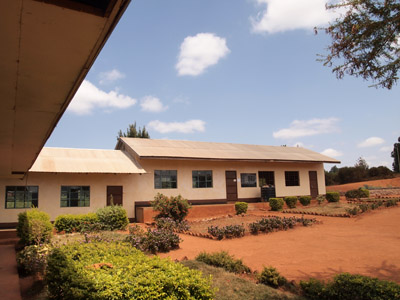
|
 |
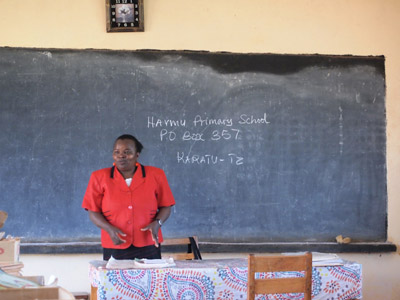
|
 |
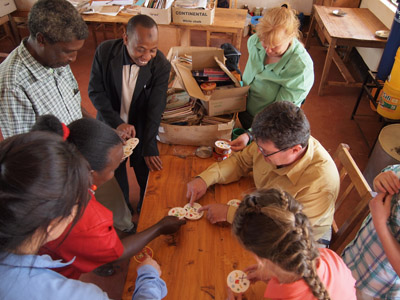
|
 |
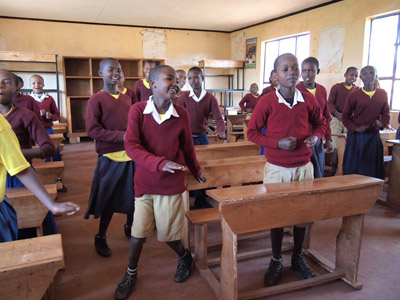
|
 |
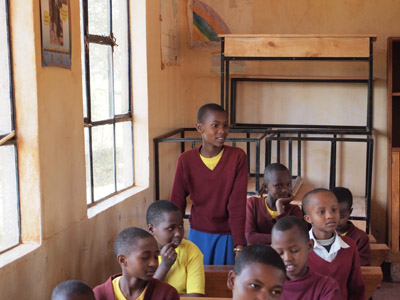
|
 |
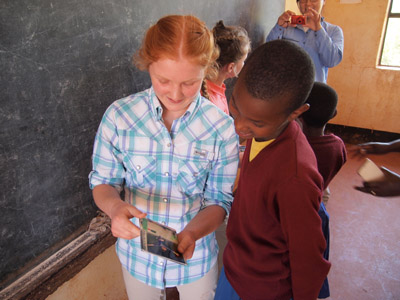
|
 |
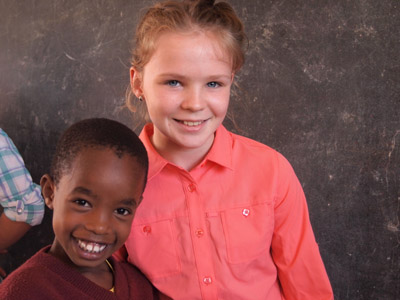
|
 |
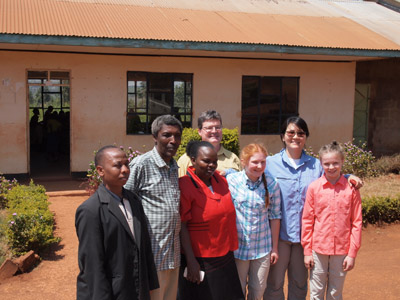
|
 |
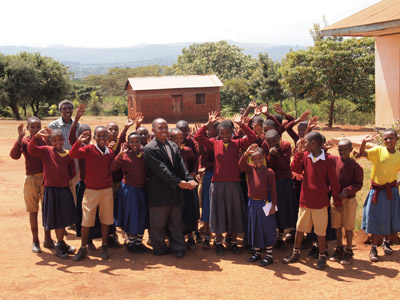
|
 |
|
Next we visited a coffee plantation. The closeups are of coffee berries ripening on the plant, and then later of dried (shelled?) coffee beans prior to roasting. For me the highlight of the visit was the gardens, which had a staggering variety of birds; I could have spent weeks there.
|
|
 |
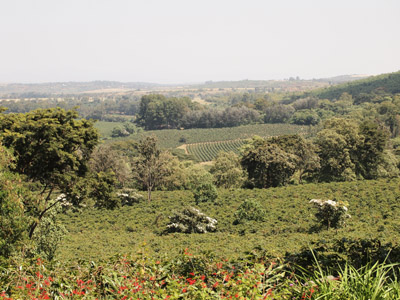
|
 |
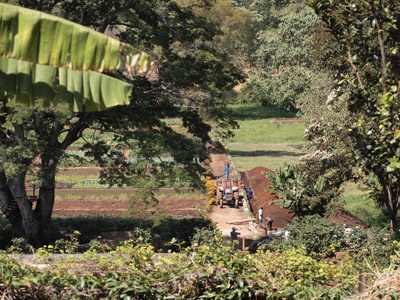
|
 |
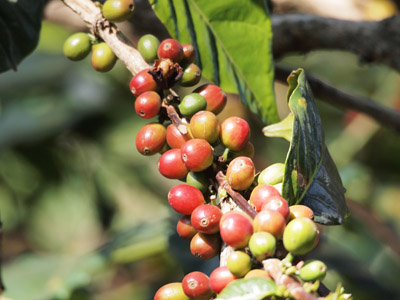
|
 |
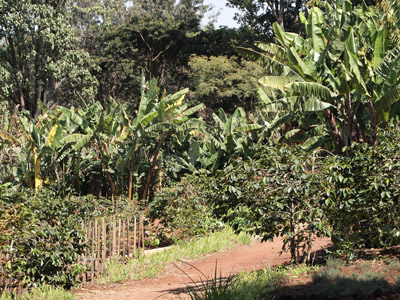
|
 |
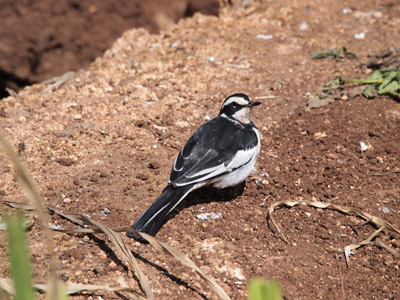
|
 |
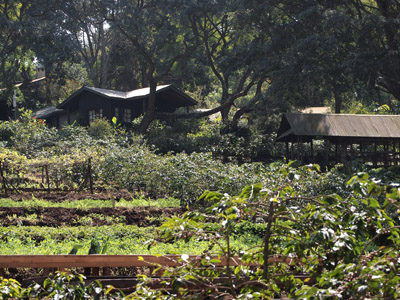
|
 |
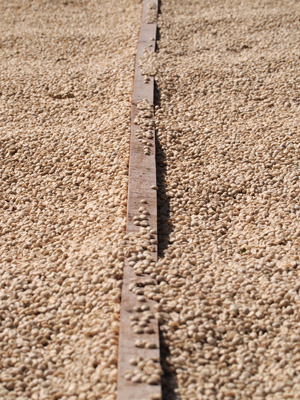
|
 |
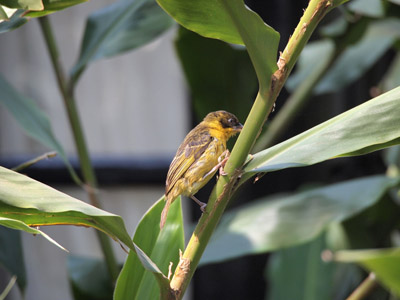
|
 |
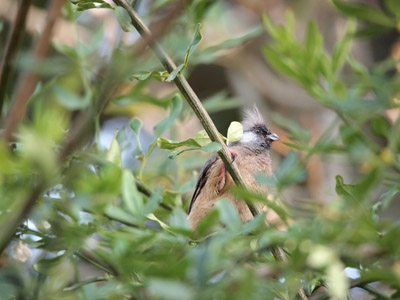
|
 |
| Ngorongoro Conservation Area |
 |
|
The evening of our third day at Tarangire, we drove onward to Ngorongoro Conservation Area. Ngorongoro Crater is an ancient volcanic caldera some 10–12 miles wide. That first evening we saw the crater from an overlook, and stayed in a camp on the rim. I guess those are maybe army ants in the fifth picture? Note that Keewi has a blog post about Ngorongoro at Keewi's Adventures.
|
|
 |
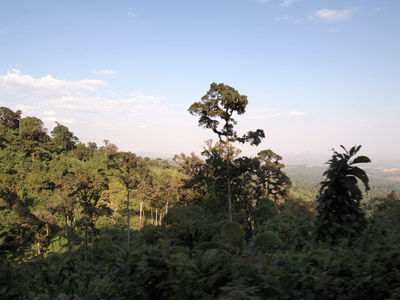
|
 |
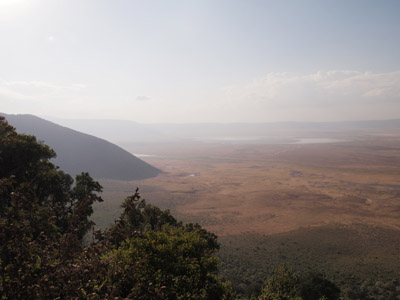
|
 |
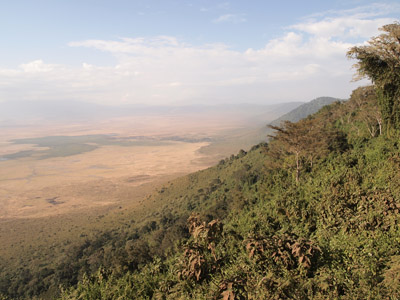
|
 |
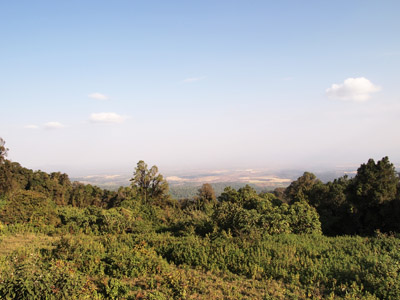
|
 |
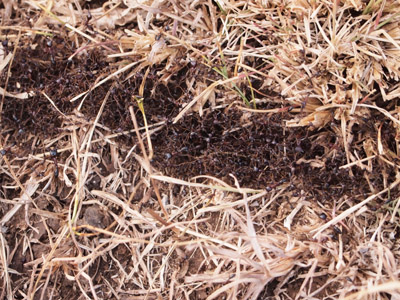
|
 |
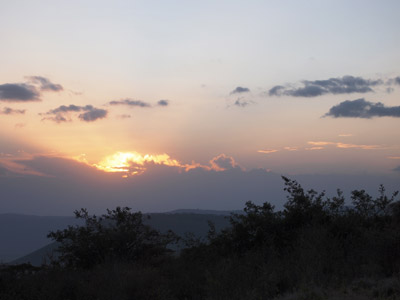
|
 |
|
The next morning we descended into the caldera, a truly spectacular drive. In the crater we saw a new variety of wildlife, including lions, crowned cranes, and flamingos. No more elephants or giraffes, though; they aren't present in Ngorongoro, apparently. Perhaps not enough trees for them? In photo 13 below you can see a rhino, like a tank rolling among the comparatively tiny zebras around it. That's the best view of a rhino we got; they're rare (endangered, I think?), and avoid people. But they are surprisingly large and fast-moving.
|
|
 |
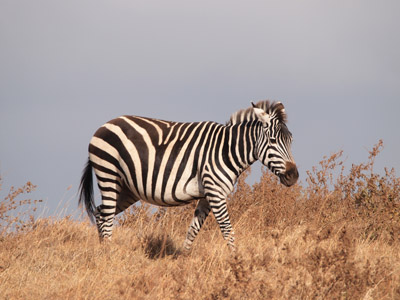
|
 |
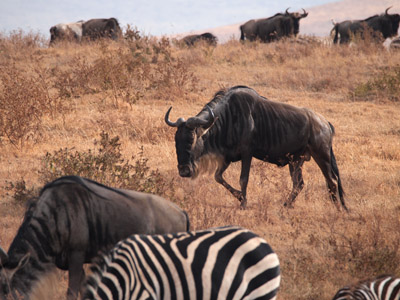
|
 |
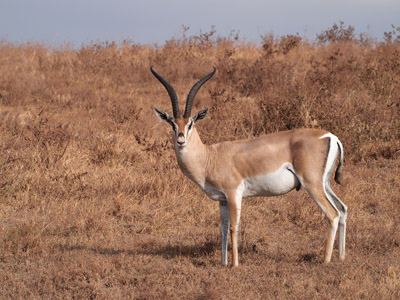
|
 |
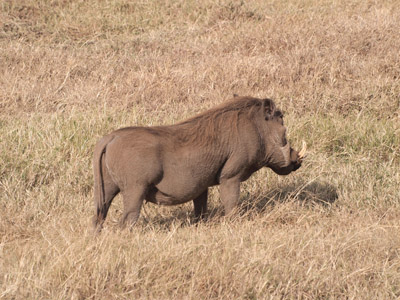
|
 |
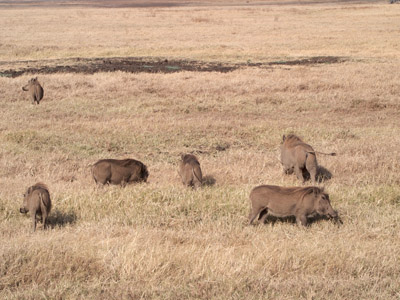
|
 |
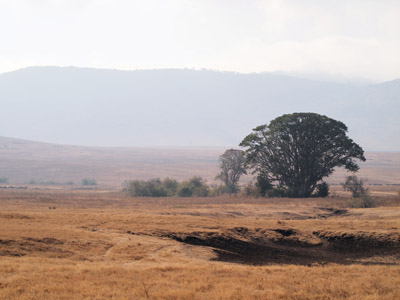
|
 |
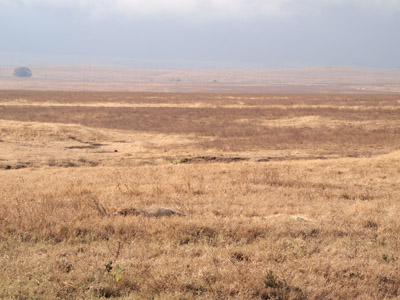
|
 |
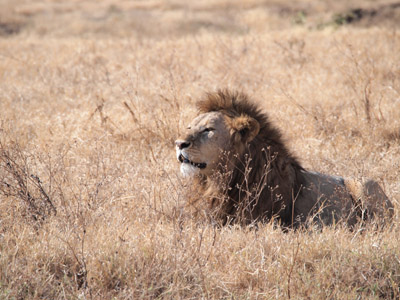
|
 |
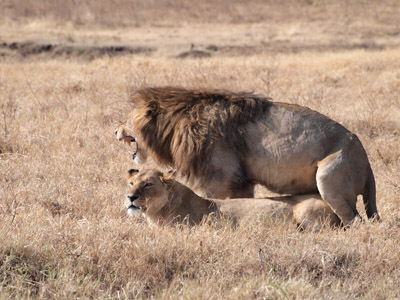
|
 |
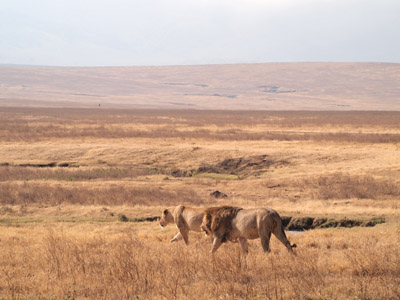
|
 |
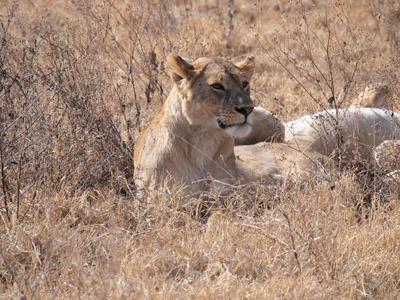
|
 |
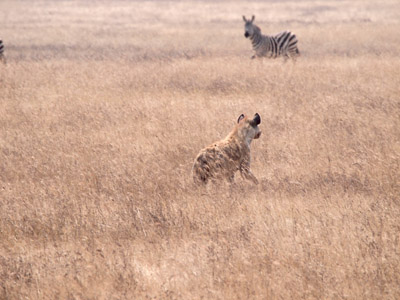
|
 |
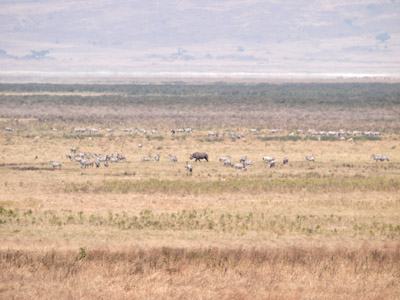
|
 |
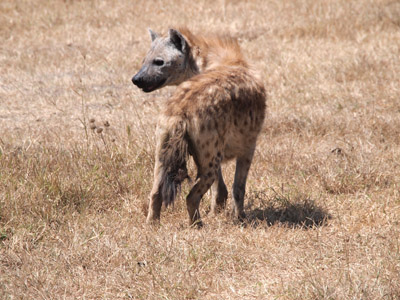
|
 |
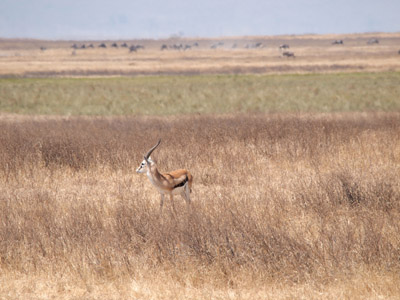
|
 |
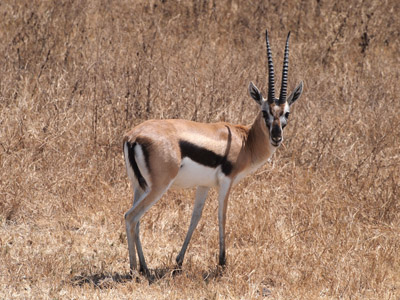
|
 |
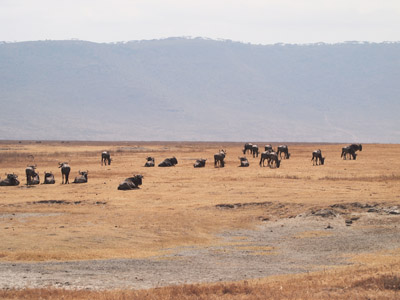
|
 |
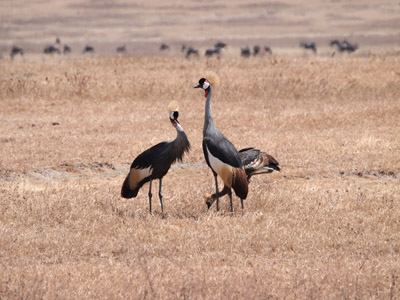
|
 |
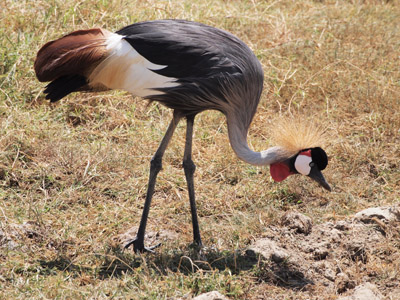
|
 |
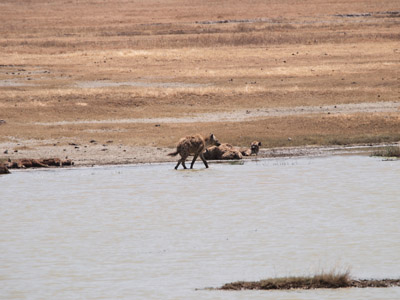
|
 |
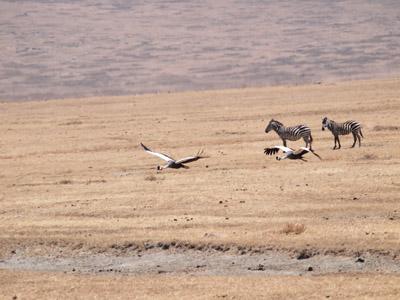
|
 |
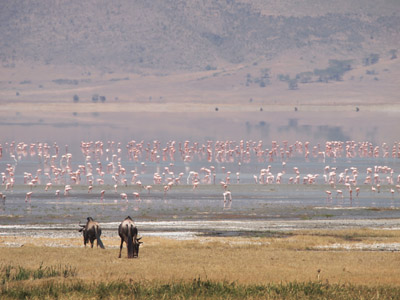
|
 |
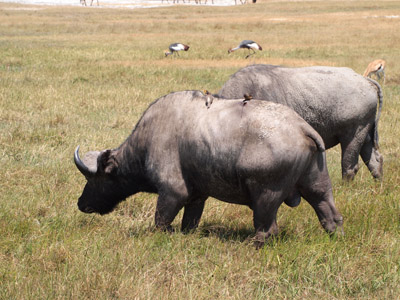
|
 |
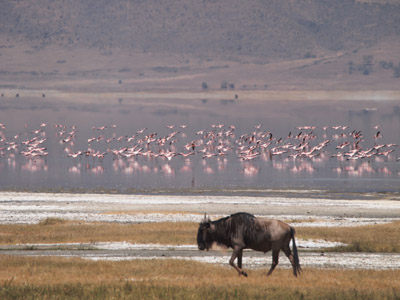
|
 |
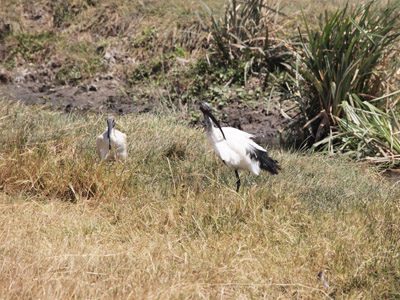
|
 |
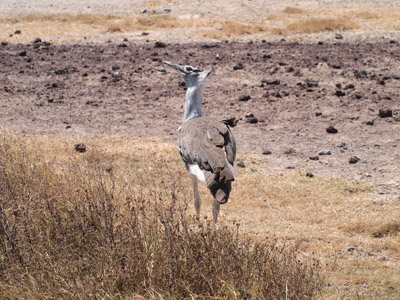
|
 |
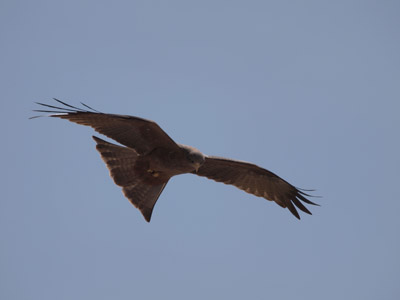
|
 |
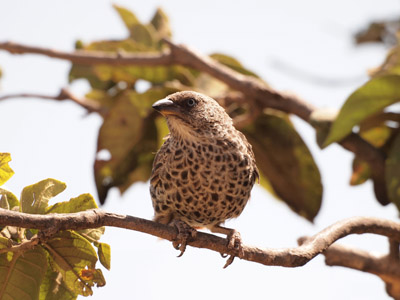
|
 |
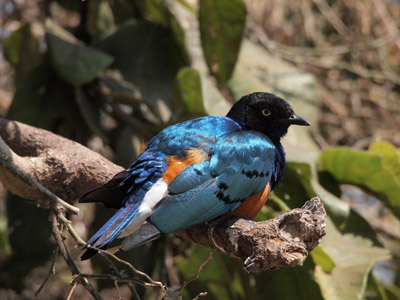
|
 |
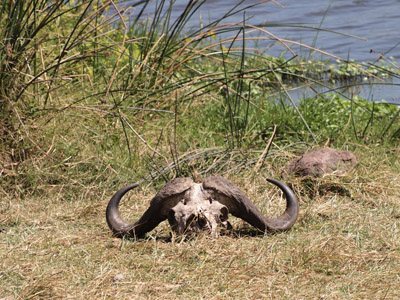
|
 |
|
I love this sequence. The lion snoozing; waking up and lolling around in the sun while the wildebeest loiter obliviously; and then the panic when the wildebeest realize they've been hanging out just a stone's throw from a lion, while the lion still lounges contentedly. It's good to be at the top of the food chain.
|
|
 |
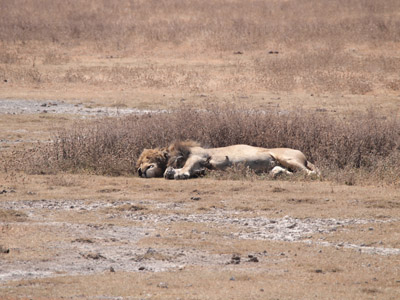
|
 |
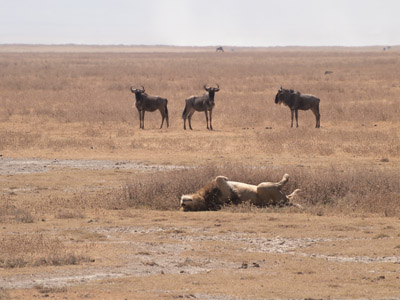
|
 |
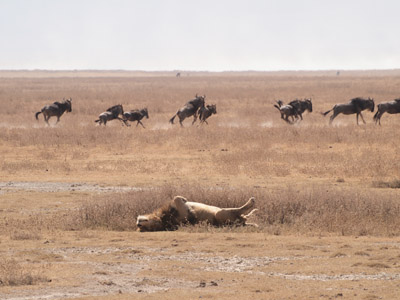
|
 |
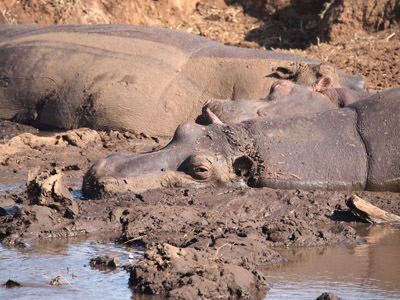
|
 |
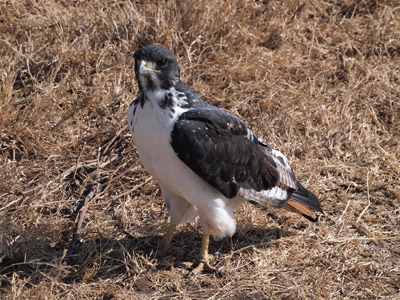
|
 |
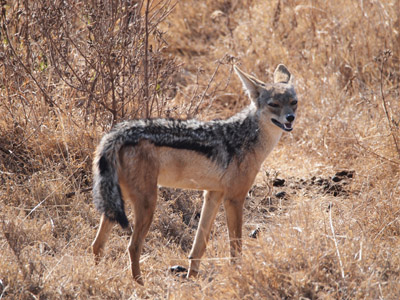
|
 |
|
At this point we visited a Maasai village. They make a sport out of jumping vertically without bending their knees, powered by their calves alone; you can see in the fourth photo, in the background, how ridiculously high they can jump this way. In the second photo we are trying to do the same, and failing. The man in the third photo is the chief of the village (or the son of the chief, Keewi thinks?), who was very kind and warm; he's also in the ninth photo, when we visited their schoolhouse (much poorer that the school we had visited before). They demonstrated their technique for making fire (sixth and seventh photos), which is traditionally very important for life in rural Tanzania, although nowadays they have more modern techniques, I think. We saw the inside of one of their homes (tenth photo), took a group photo, and left. I suspect this village may make a significant income from selling bead jewelry to tourists (we bought some); you can see their stands set up in photo five.
|
|
 |
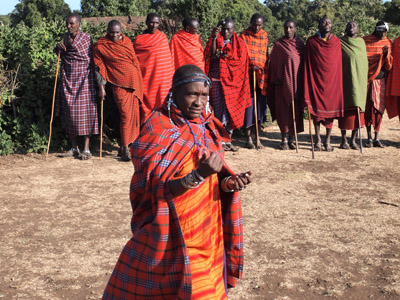
|
 |
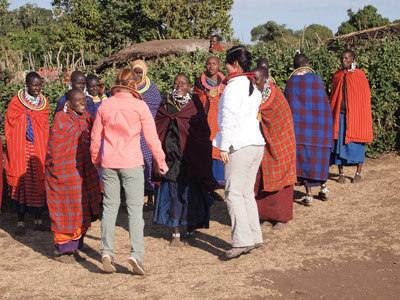
|
 |
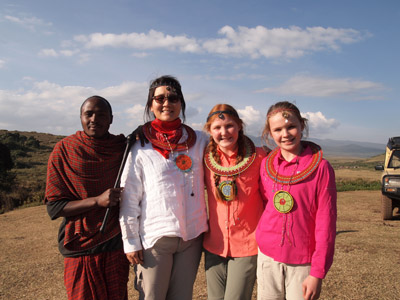
|
 |
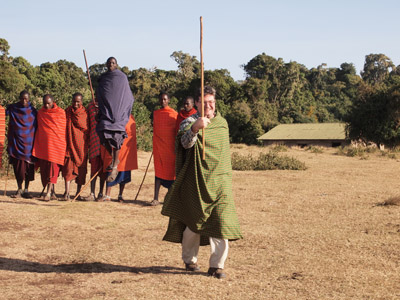
|
 |
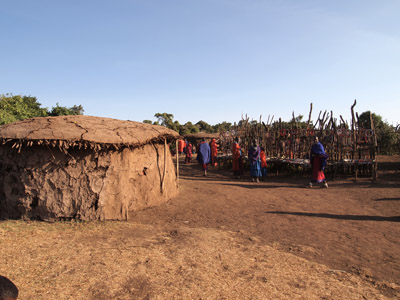
|
 |
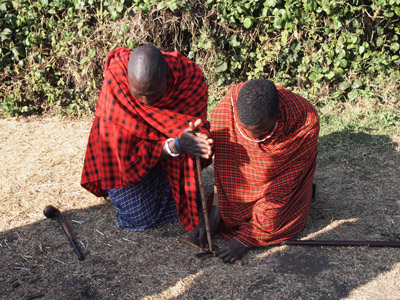
|
 |
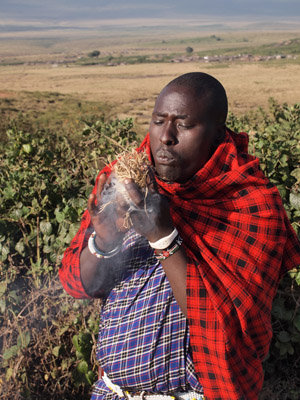
|
 |
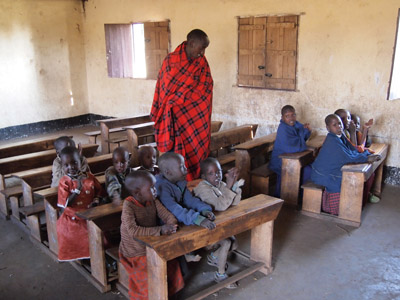
|
 |
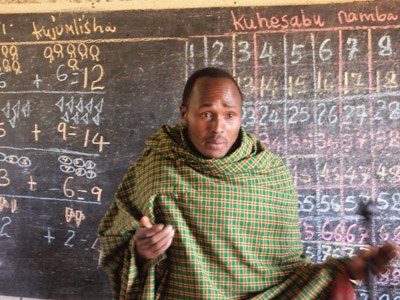
|
 |
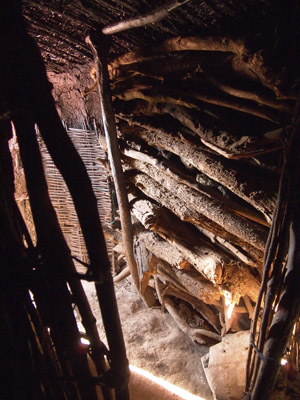
|
 |
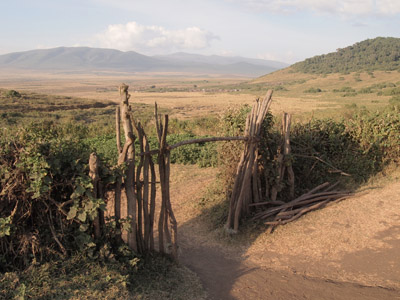
|
 |
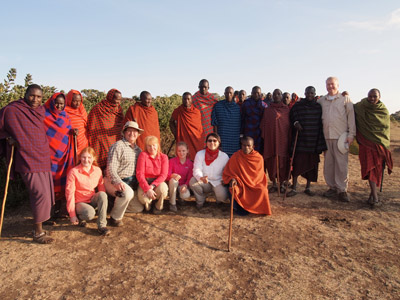
|
 |
| Serengeti National Park |
 |
|
We had one more evening and morning on the rim of Ngorongoro (first four photos). We took a group photo with the crew of this camp, which was nice; it was a brief stay but I felt more connected to them than with the staff at the other camps. Especially the Maasai guards, who slept during the day and guarded us at night against lions. They weren't armed with guns, but with spears and — if I recall correctly — bows and arrows; I had a chat with one of them (translated by Mohamed, I suppose, but I don't remember that), and he said that they preferred their traditional weapons. We felt safe under their guard — and we did hear lions roaring during the night! The chef at Ngorongoro was also the best of the trip; I would love to have that food again. It was also the most pleasant in terms of climate, due to the elevation on the crater rim; it was really rather chilly at night, which I like. After the group photo we drove on to the Serengeti.
|
|
 |
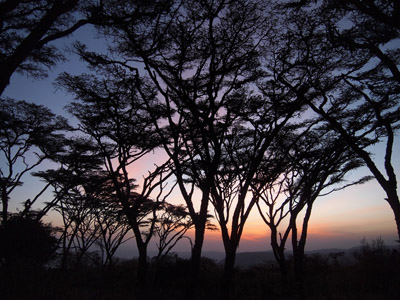
|
 |
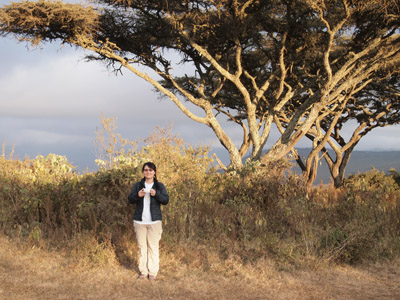
|
 |
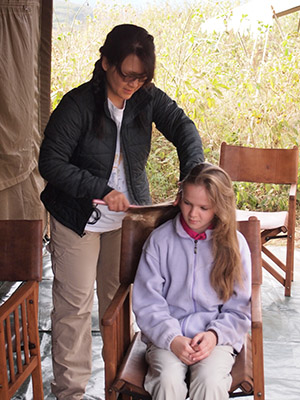
|
 |
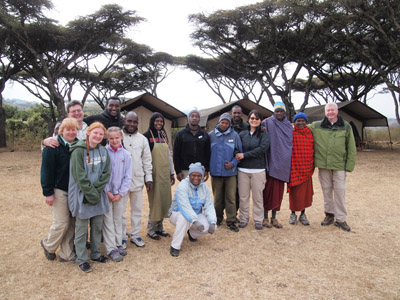
|
 |
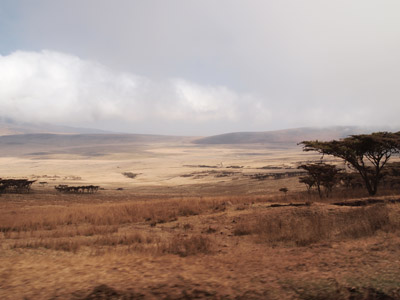
|
 |
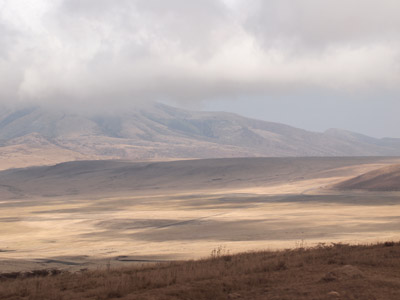
|
 |
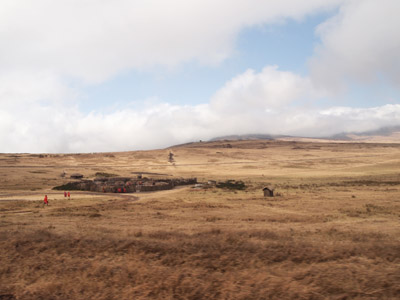
|
 |
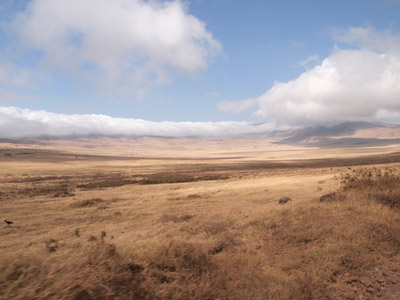
|
 |
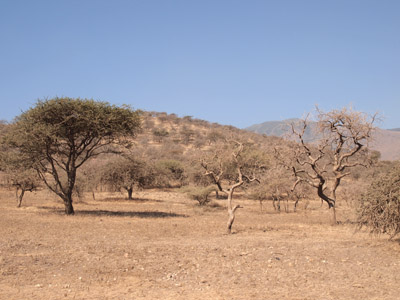
|
 |
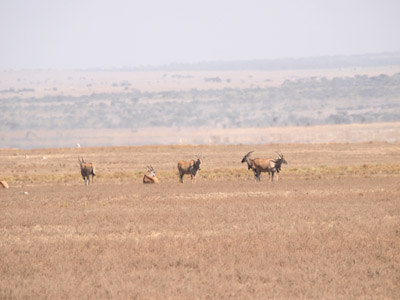
|
 |
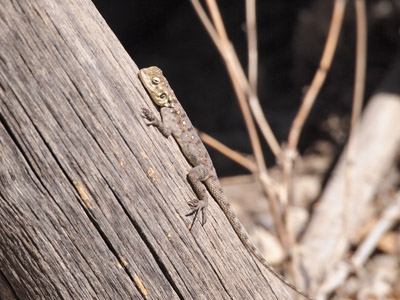
|
 |
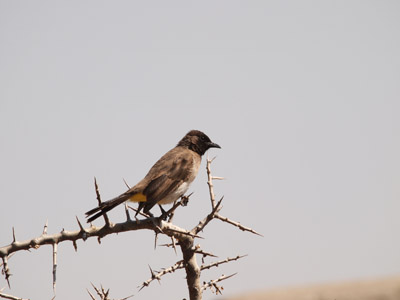
|
 |
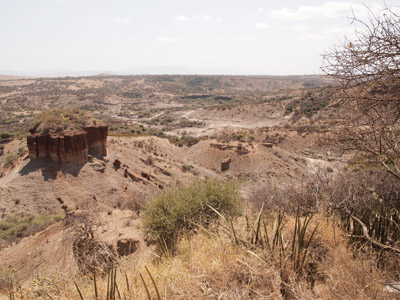
|
 |
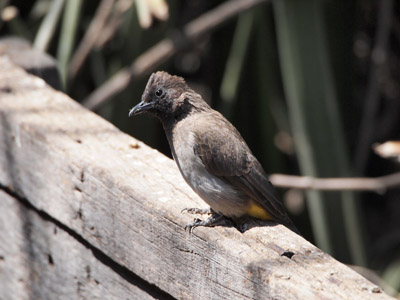
|
 |
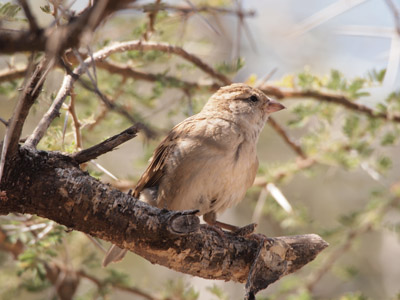
|
 |
|
In the Serengeti there were areas of controlled burn, which we hadn't seen in the other parks. We saw cheetahs for the first time, and leopards up in the trees.
|
|
 |
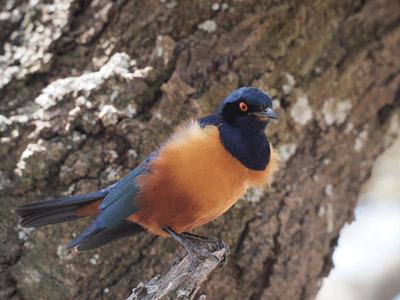
|
 |
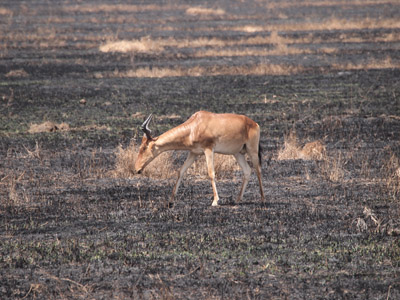
|
 |
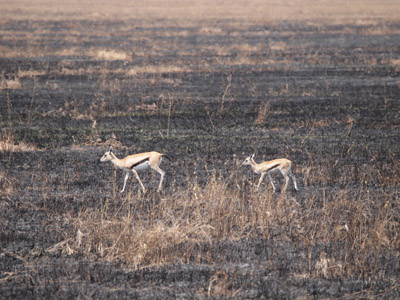
|
 |
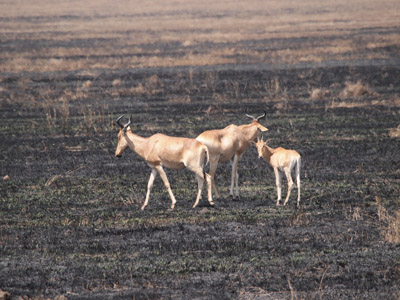
|
 |
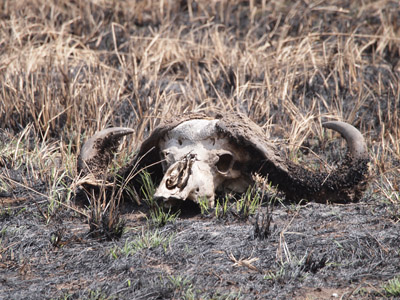
|
 |
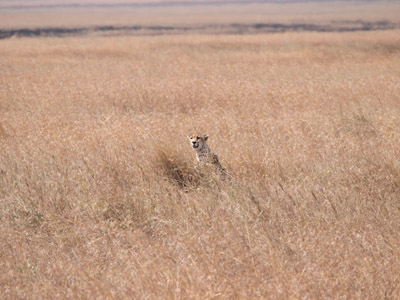
|
 |
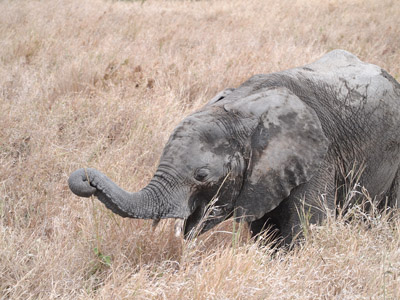
|
 |
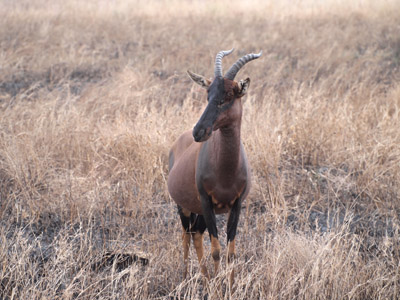
|
 |
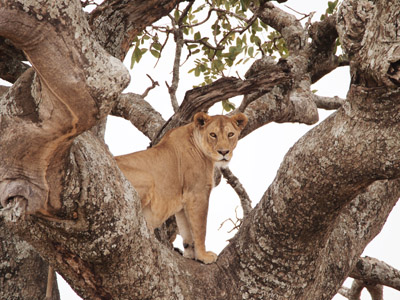
|
 |
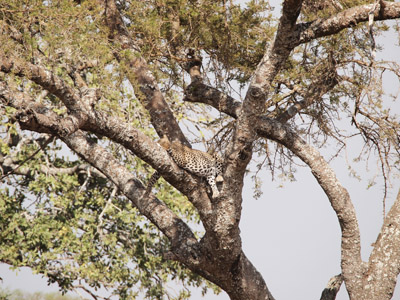
|
 |
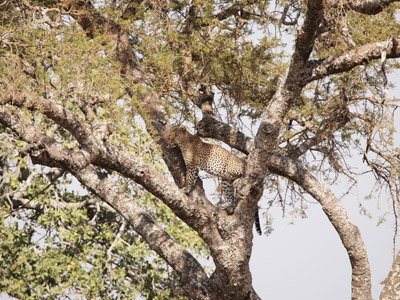
|
 |
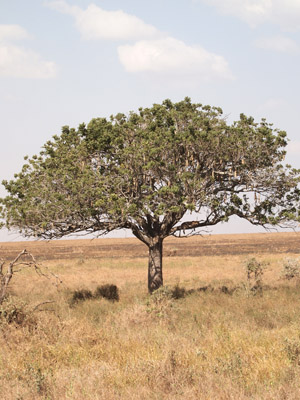
|
 |
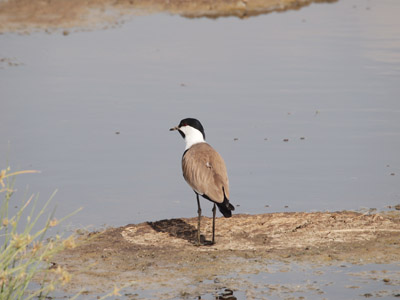
|
 |
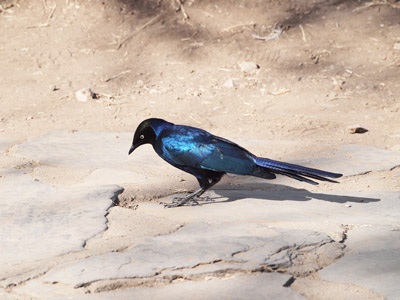
|
 |
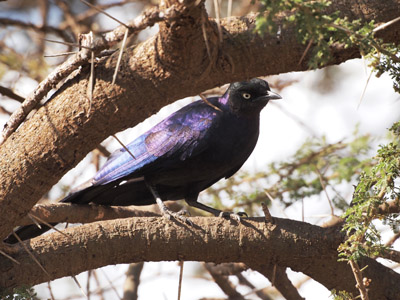
|
 |
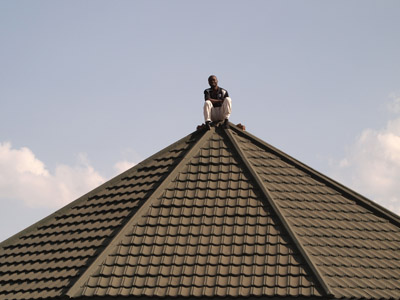
|
 |
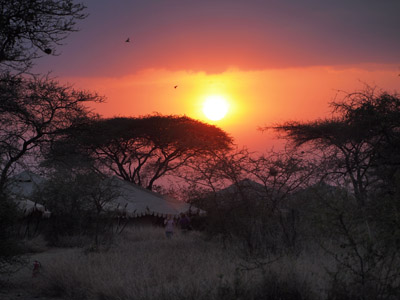
|
 |
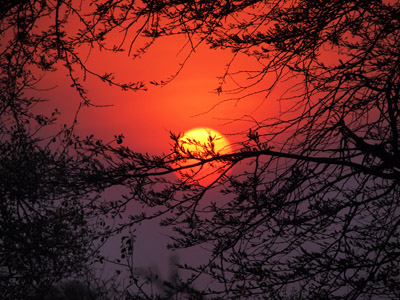
|
 |
|
Day two at the Serengeti, we started with a ride in a hot air balloon. It was really neat to see the landscape from that perspective; I would highly recommend doing this. If I recall correctly, these were not the first hippos we saw, but I guess they're the first hippos that I'm showing photos of here. We ended with the traditional post-Montgolfier champagne, and breakfast on the plains, including some lovely birds in the vicinity.
|
|
 |
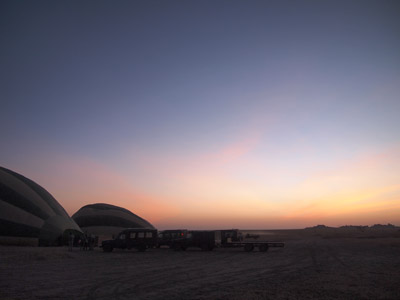
|
 |
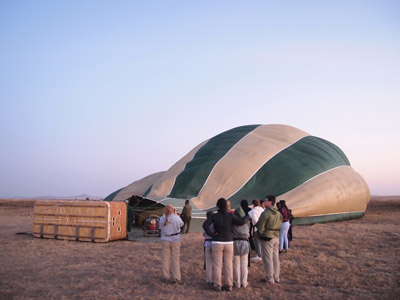
|
 |
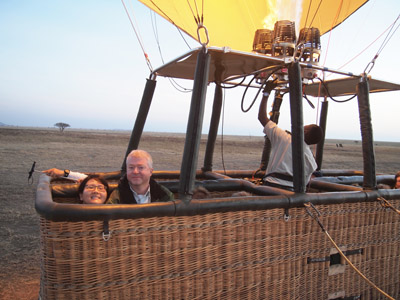
|
 |
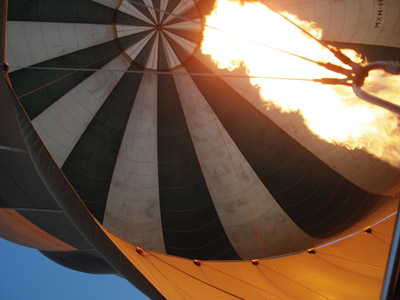
|
 |
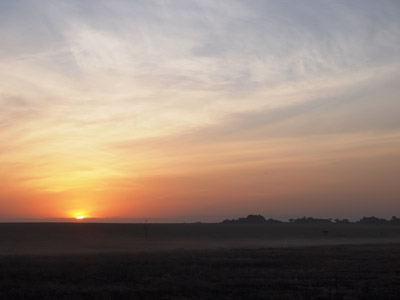
|
 |
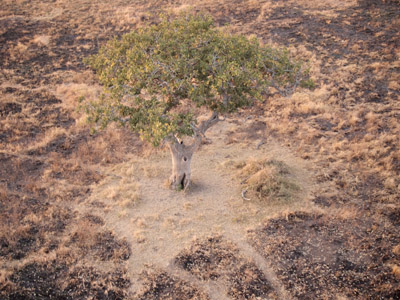
|
 |
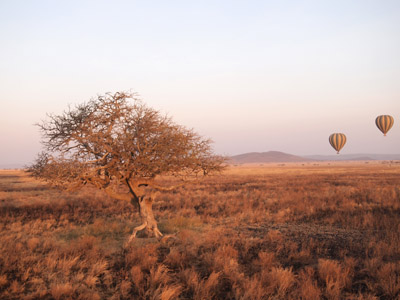
|
 |
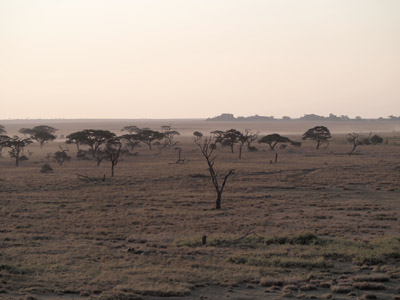
|
 |
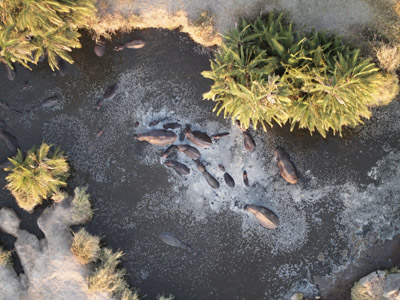
|
 |
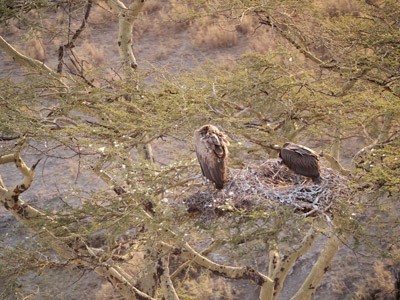
|
 |
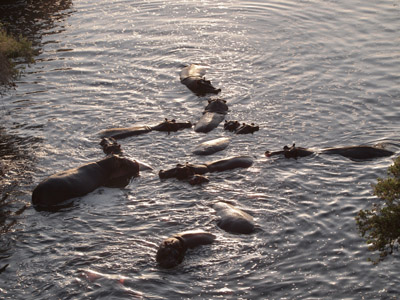
|
 |
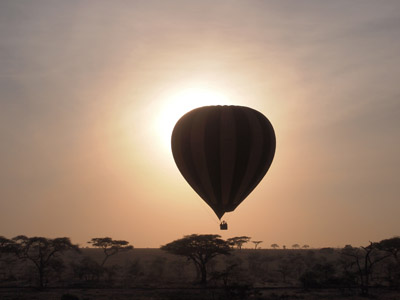
|
 |
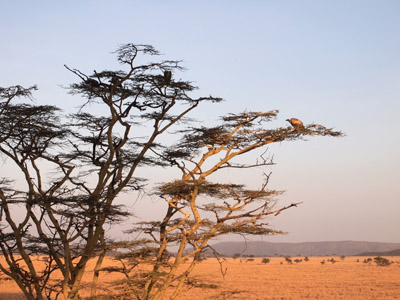
|
 |
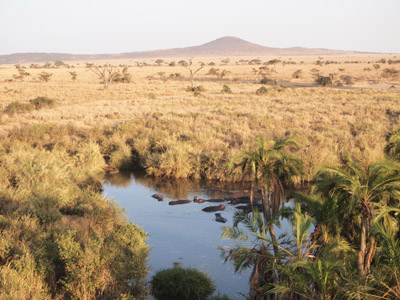
|
 |
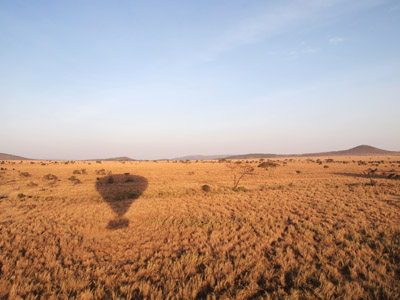
|
 |
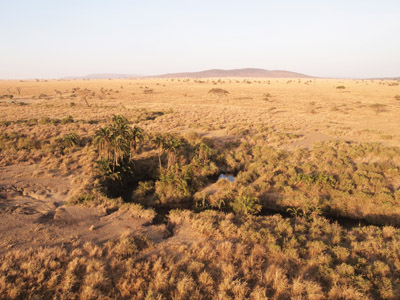
|
 |
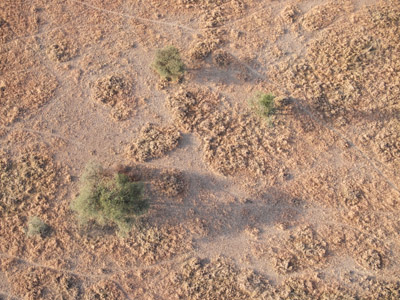
|
 |
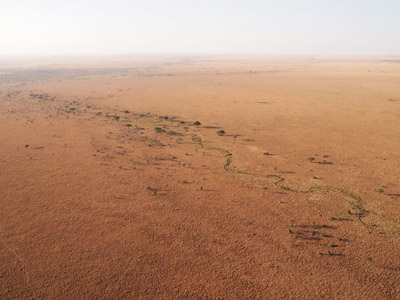
|
 |
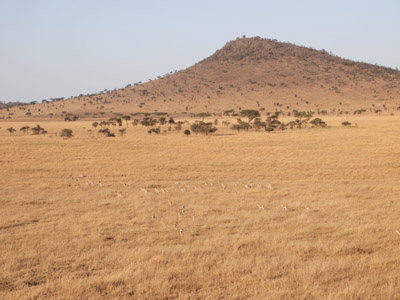
|
 |
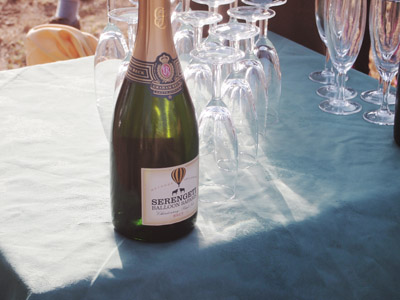
|
 |
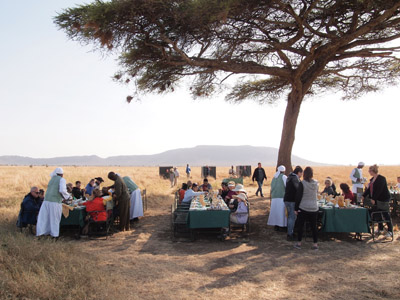
|
 |
|
Returning to our vehicle-based safari, we start out with some Cape Buffalo, which quickly acquired the nickname "Mr. President" for their revolutionary-era hairstyle (hornstyle?). It was neat seeing the oxpeckers on them. Later in the day we had the privilege of observing a whole pride of lions lolling about in the sun.
|
|
 |
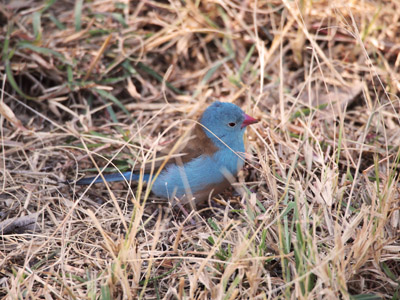
|
 |
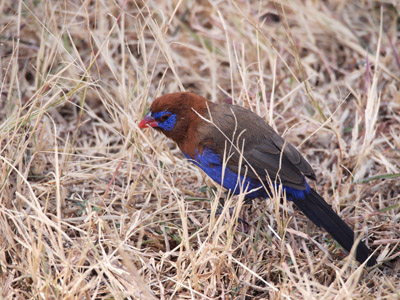
|
 |
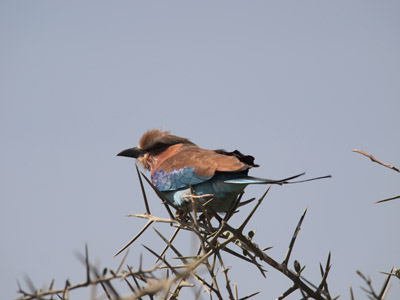
|
 |
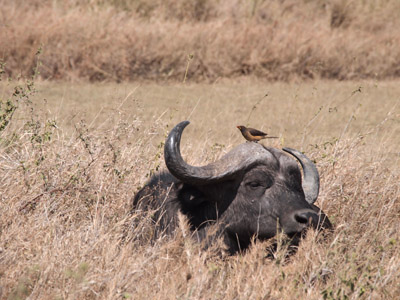
|
 |
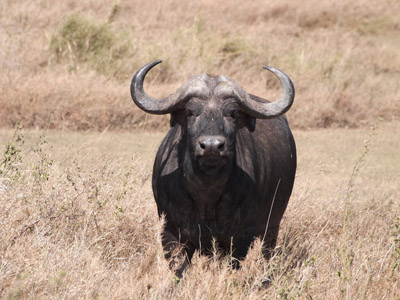
|
 |
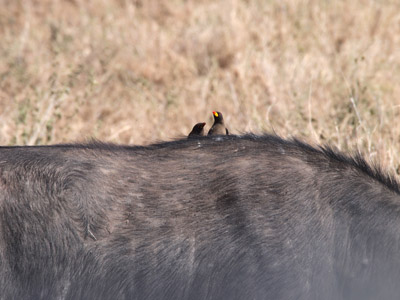
|
 |
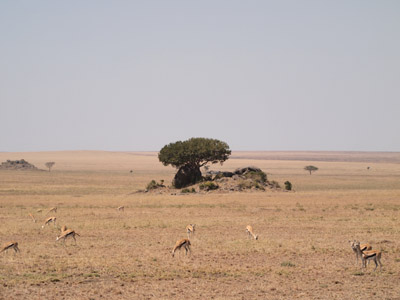
|
 |
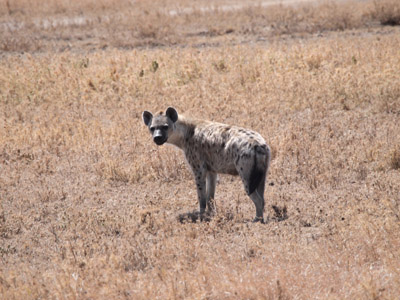
|
 |
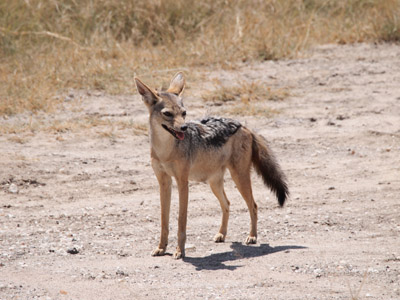
|
 |
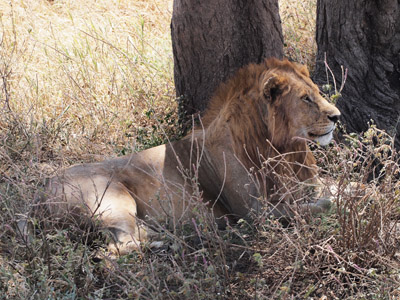
|
 |
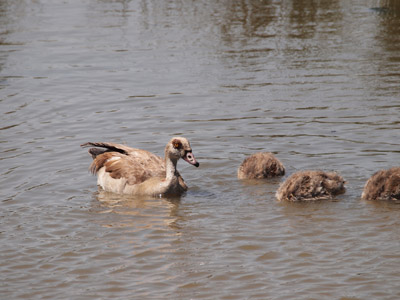
|
 |
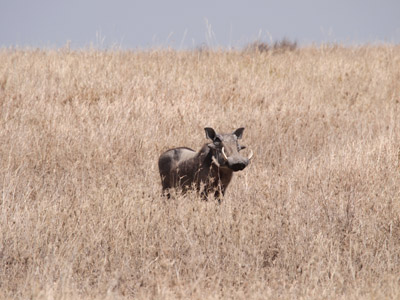
|
 |
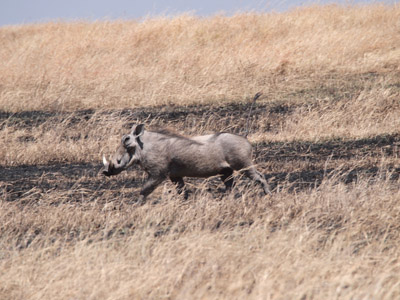
|
 |
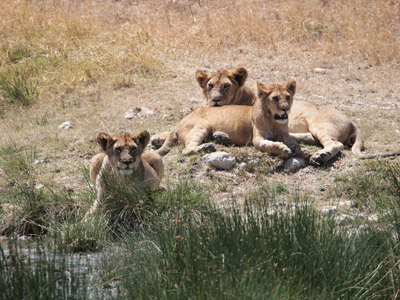
|
 |
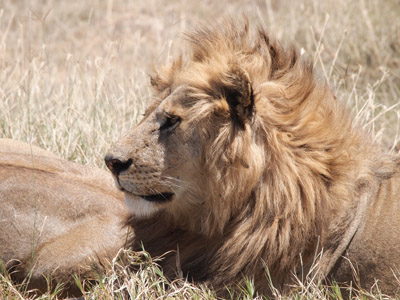
|
 |
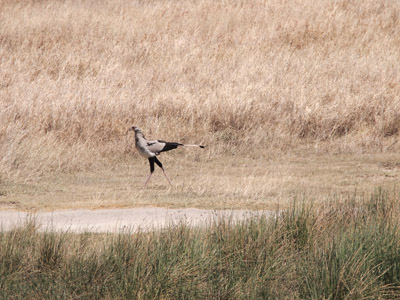
|
 |
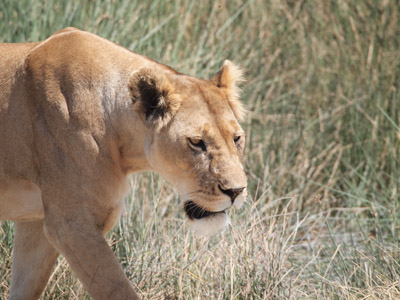
|
 |
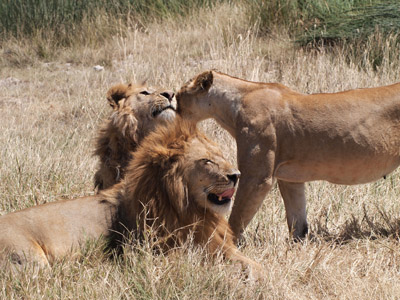
|
 |
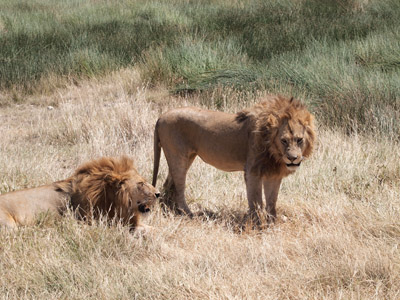
|
 |
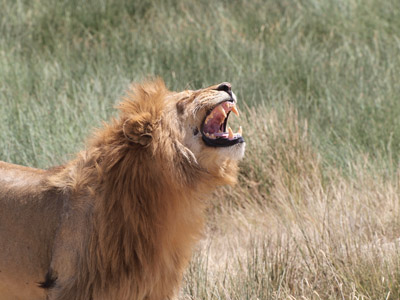
|
 |
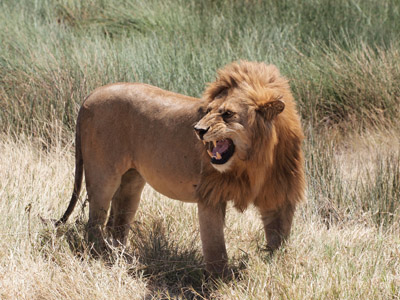
|
 |
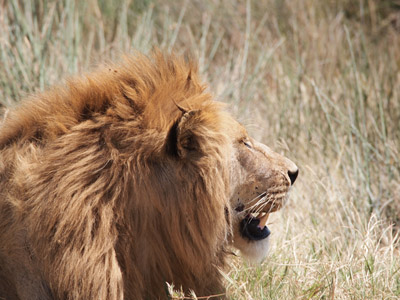
|
 |
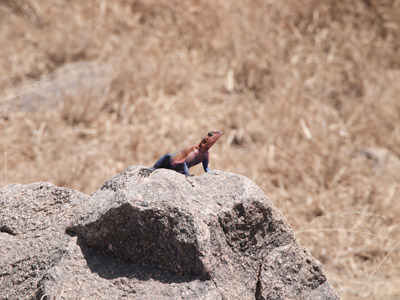
|
 |
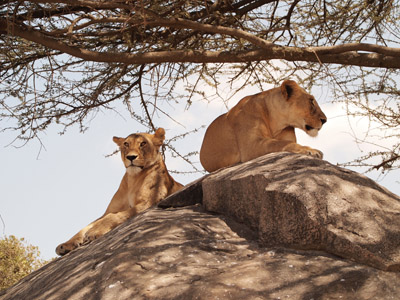
|
 |
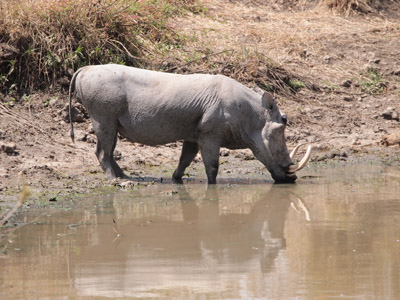
|
 |
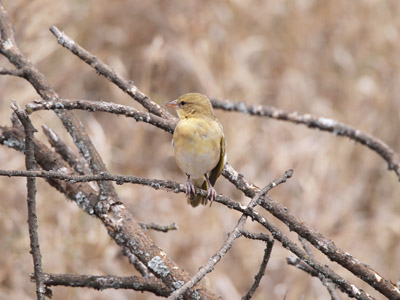
|
 |
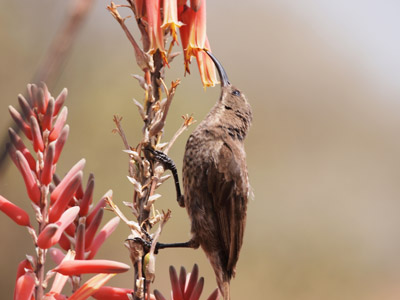
|
 |
|
Day three at the Serengeti. We visited a water hole with many hippos, as well as crocodiles and other reptilian beasts. I have to say that hippos are unbelievably disgusting. I don't think I have ever seen anything more disgusting in my life. It's funny, because Westerners grow up with hippos as romanticized by Sandra Boynton's cartoons; but in real life they live in pools of their own filth that you can smell from miles away. They eat plants, and Mohamed's jokes about "salad" put me off all kinds of salad for months afterwards.
|
|
 |
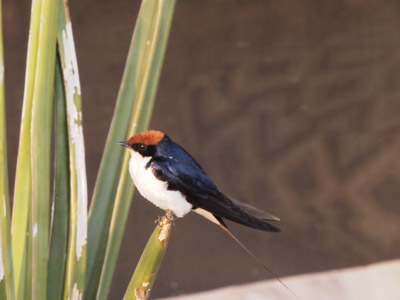
|
 |
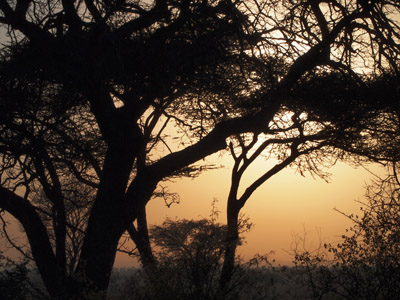
|
 |
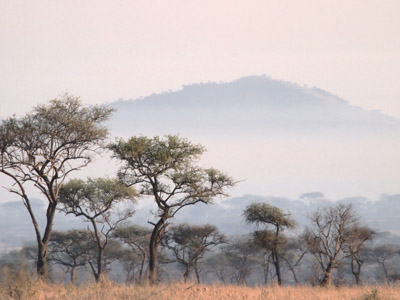
|
 |
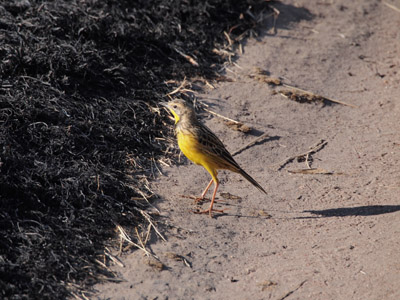
|
 |
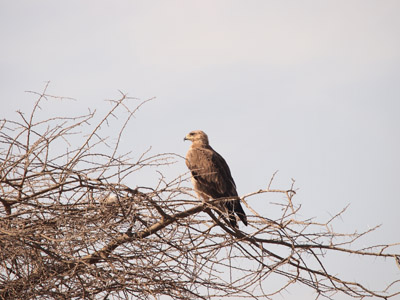
|
 |
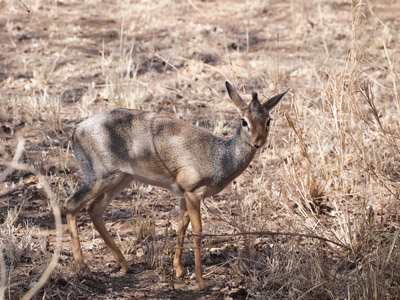
|
 |
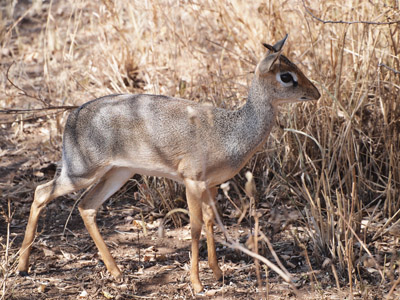
|
 |
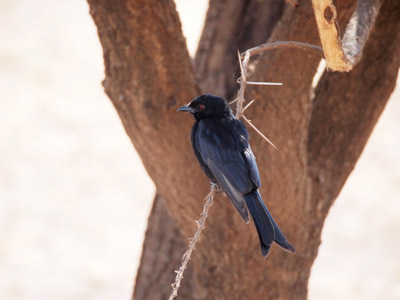
|
 |
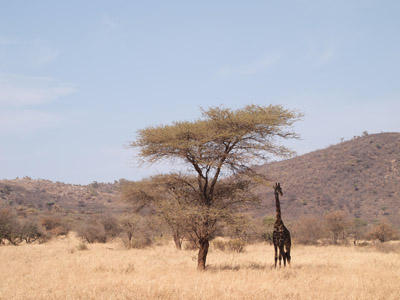
|
 |
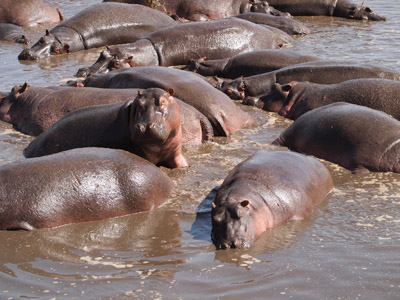
|
 |
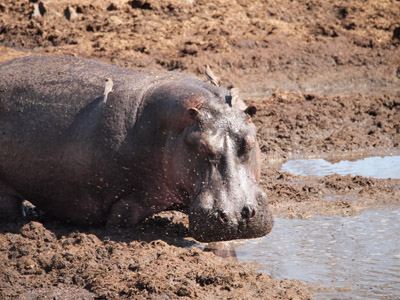
|
 |
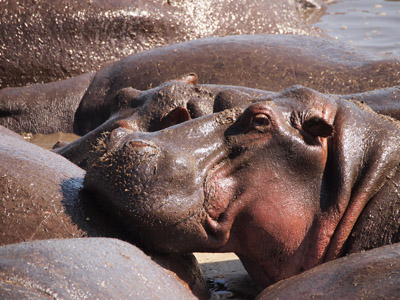
|
 |
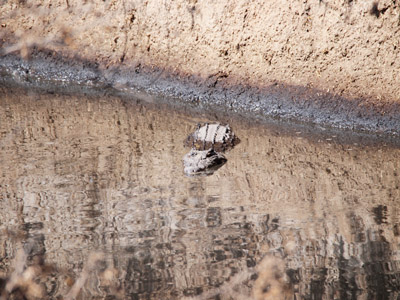
|
 |
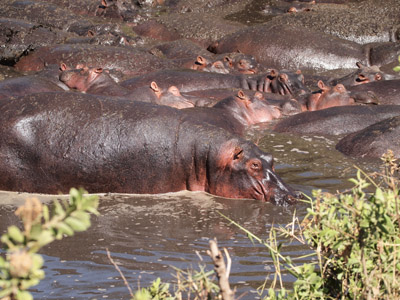
|
 |
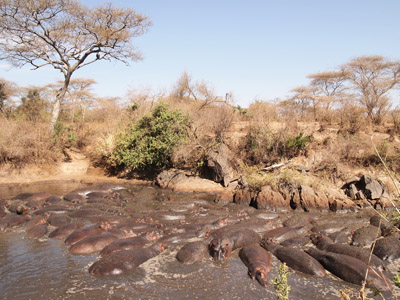
|
 |
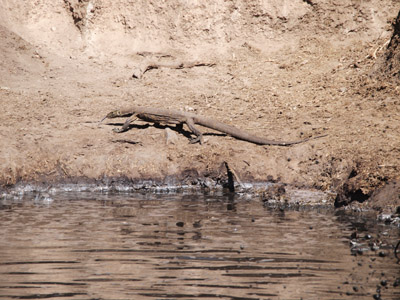
|
 |
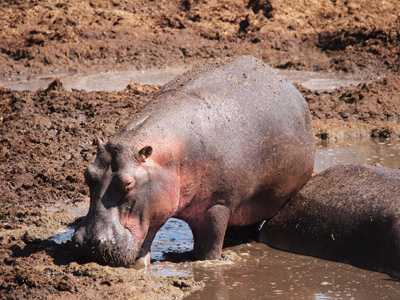
|
 |
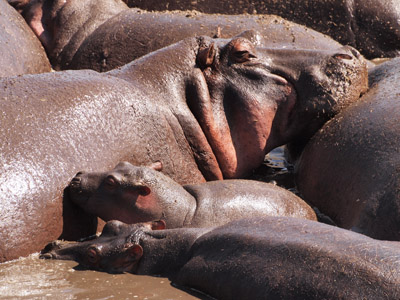
|
 |
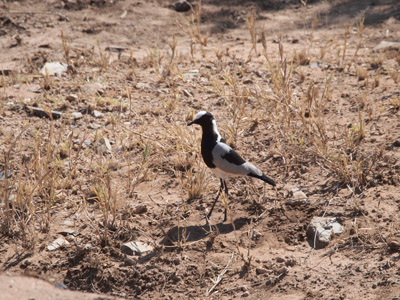
|
 |
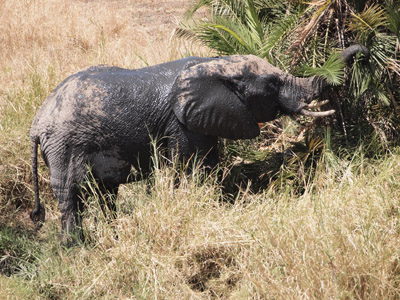
|
 |
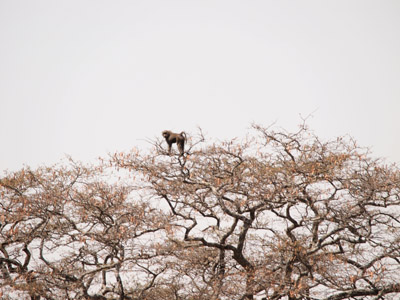
|
 |
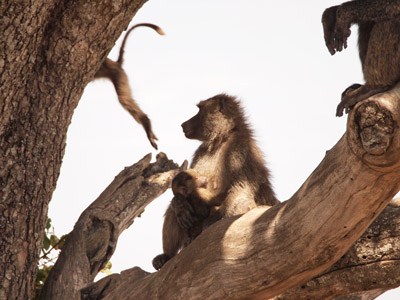
|
 |
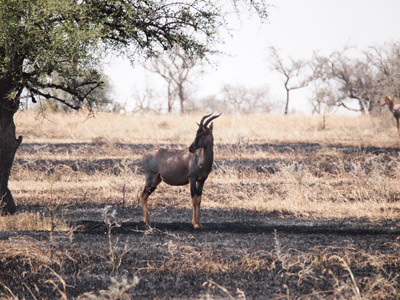
|
 |
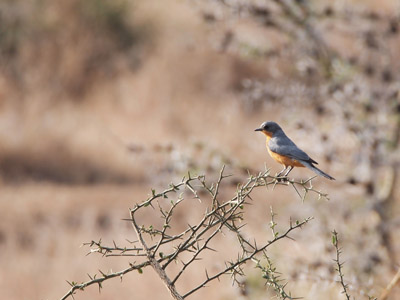
|
 |
|
Driving back to Arusha. We did get to see some wildlife along the way — notably, our best view of cheetahs!
|
|
 |
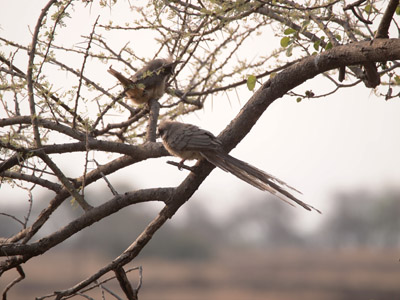
|
 |
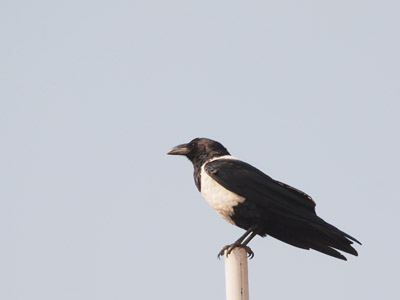
|
 |
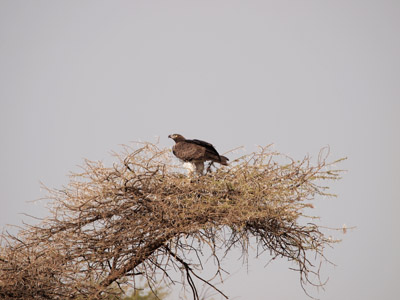
|
 |
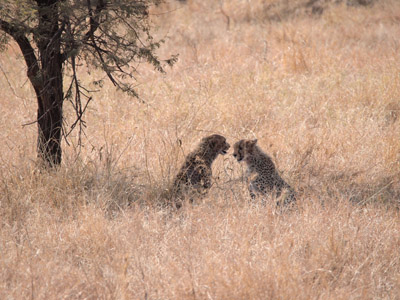
|
 |

|
 |
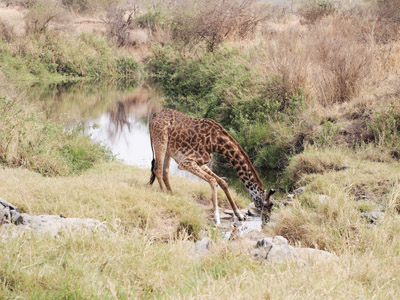
|
 |
| Mount Kilimanjaro National Park |
 |
|
The next day we did a day hike on the flanks of Mt. Kilimanjaro, a dormant volcano that is the tallest mountain in Africa, and the highest single free-standing mountain in the world (say Wikipedia; I think this means a mountain that is not part of a range). We didn't get anywhere near the peak on our little day hike, of course, but we got to see the peak and enjoy the stark high-altitude views.
|
|
 |
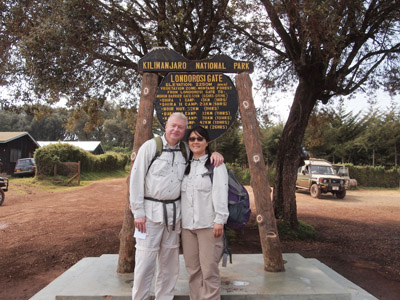
|
 |
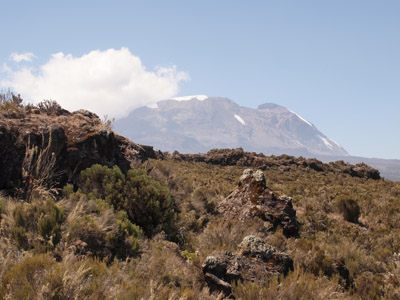
|
 |
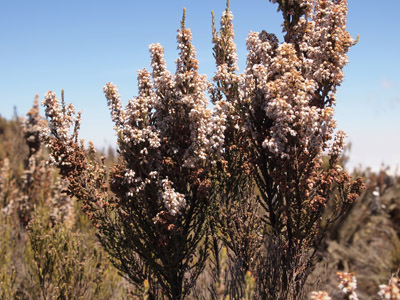
|
 |
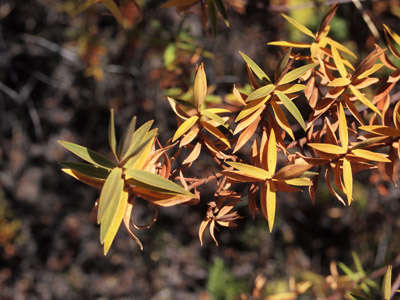
|
 |
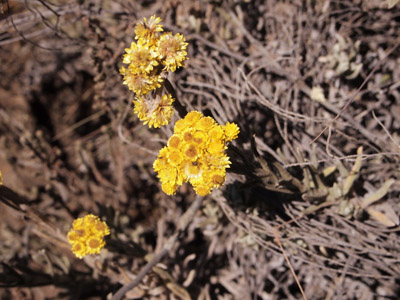
|
 |
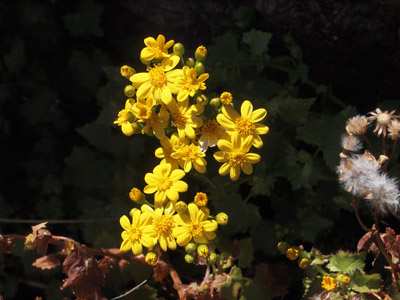
|
 |
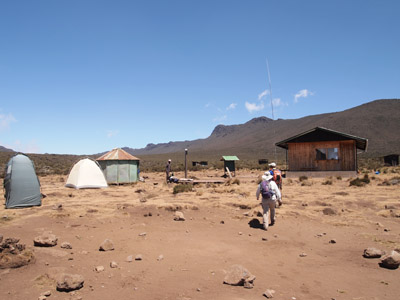
|
 |
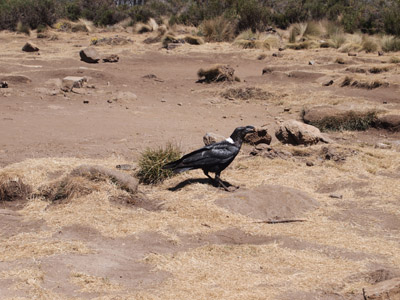
|
 |
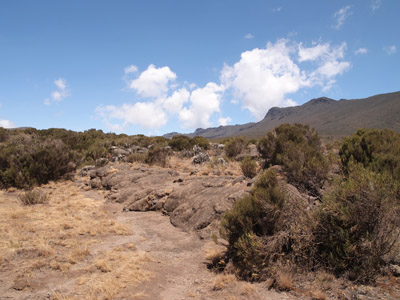
|
 |
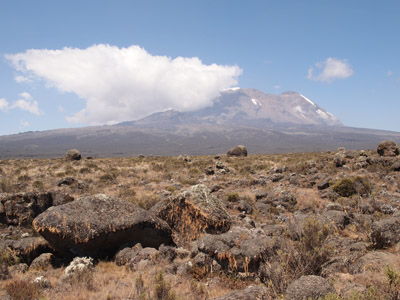
|
 |
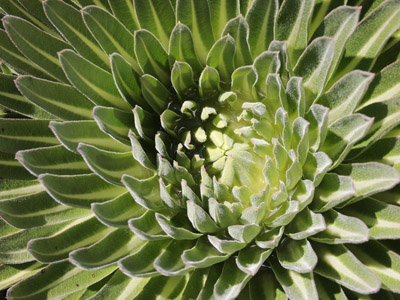
|
 |
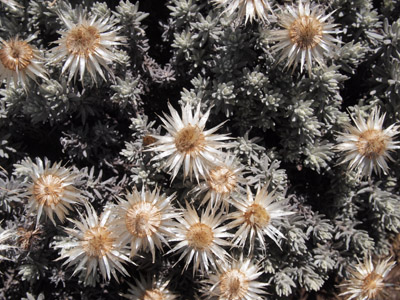
|
 |
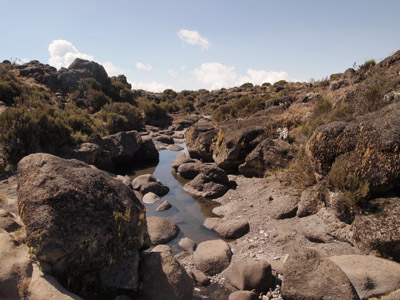
|
 |
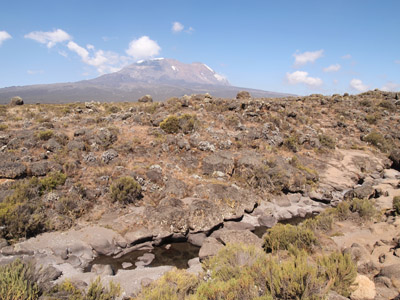
|
 |
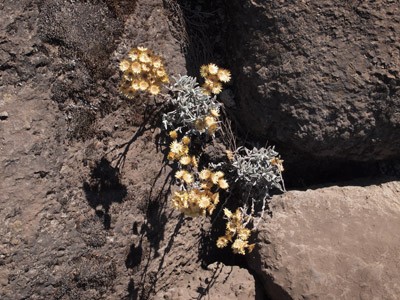
|
 |
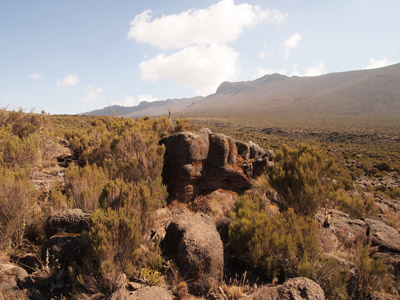
|
 |
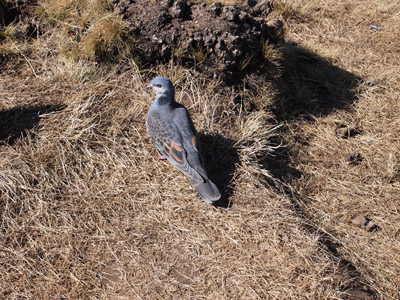
|
 |
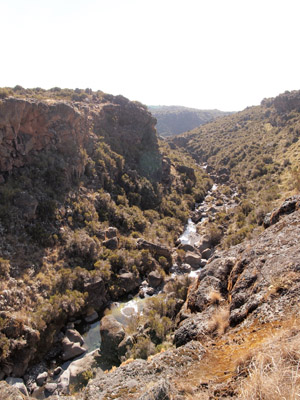
|
 |
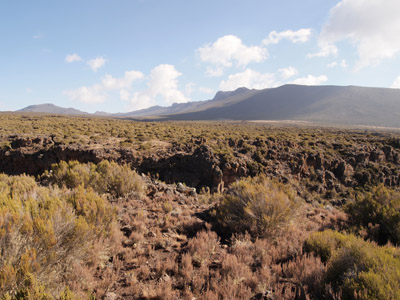
|
 |
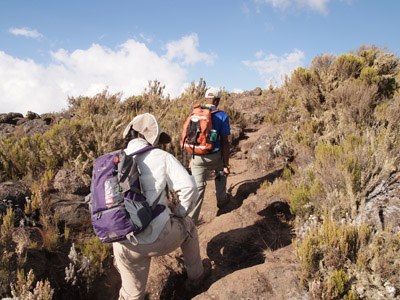
|
 |
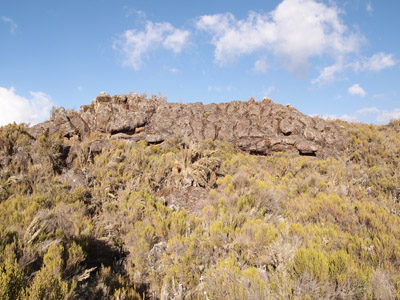
|
 |
|
After this we flew to Zanzibar for a couple of days. That is posted as a separate gallery, Zanzibar, 2016, since this gallery is quite large enough!
|
|
 |
